PFIZER DIGITAL TRANSFORMATION – Application Suite
Pfizer Inc, the world’s largest pharmaceutical company was in need of transforming all of their logistical and manufacturing processes from a labor intensive, manual, paper-based workflow into a suite of digital applications that they could manage, improve and evolve over time. As we know, Pfizer’s global portfolio includes medicines, vaccines, as well as the world’s best-known consumer health products. Designing a suite of software for their employees was destined to be quite the tall order…
Application Suite Overviews
As mentioned, over the span of a year, we worked on a tremendous amount of different applications to fill out the suite. I’m not going to get into every single application, but see below for a breakdown of a few of them below:
Balanced Scorecard (BSC)
The Balanced Scorecard dashboard tool tracks how the business is performing at the different levels and manufacturing plants across the globe, similar to any sort of analytical tool out there today. For example: You can track what the % in stock of a particular product or ingredient is in India. You can also track some of the driver metrics and associated data to that outcome metric to drill down deeper into results.
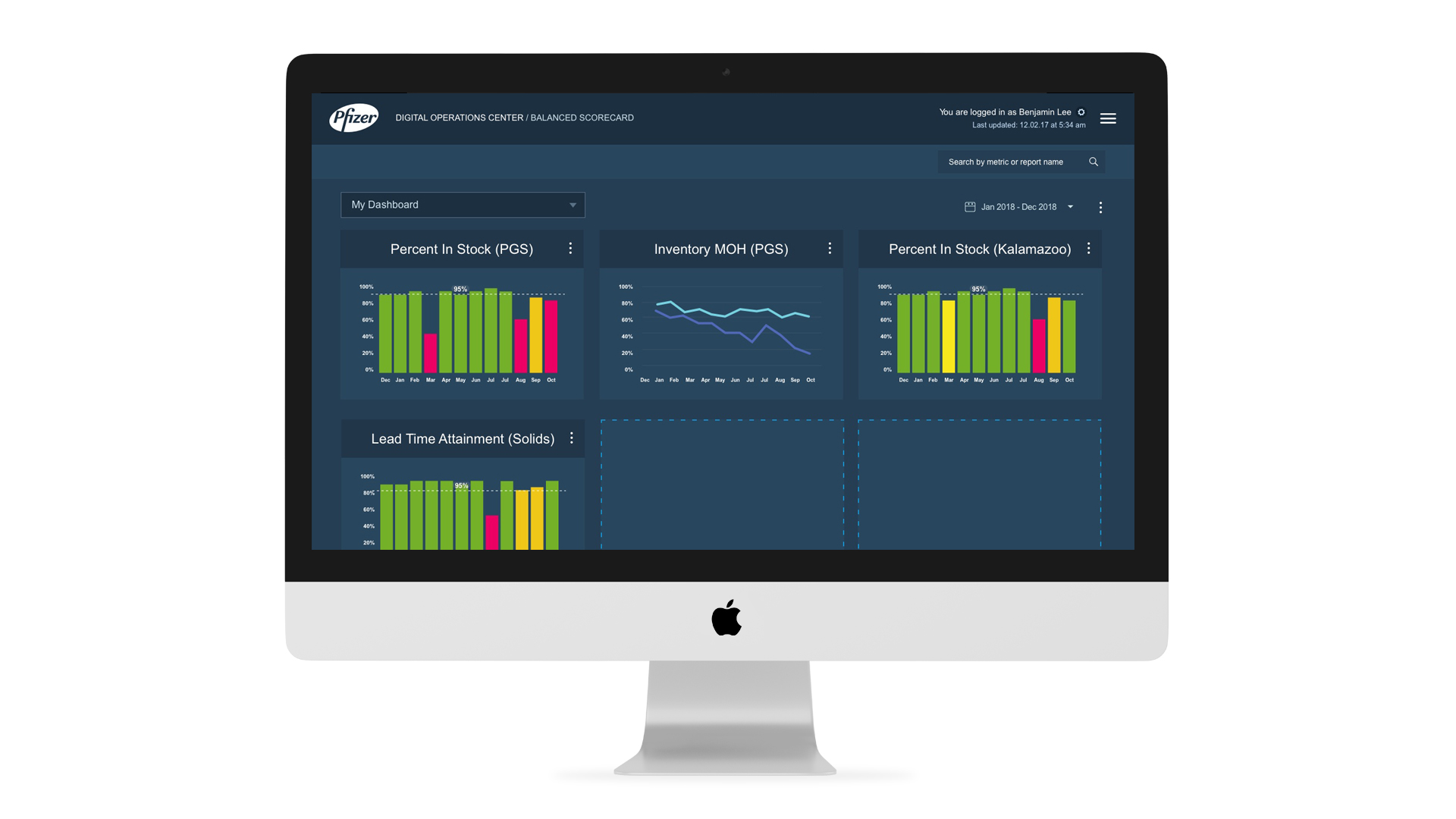
Maturity Assessment (iMEX)
The Maturity Assessment tool tracks shop floor readiness throughout the different manufacturing plans and ecosystems. It’s essential a health check to ensure that all plants are up to standards across the different ecosystems
 Standard Work (SW)
Standard Work (SW)
Standard Work is an application in which you can schedule, review and execute work for different products at different plants across the globe. For example, if I want to see how the production of Advil is performing at a manufacturing plant in India is progressing, I can view the batches and process for each ingredient in a schedule format, much like an outlook calendar that we’re all familiar with today. Essentially, Standard Work is flight control for the manufacturing processes.
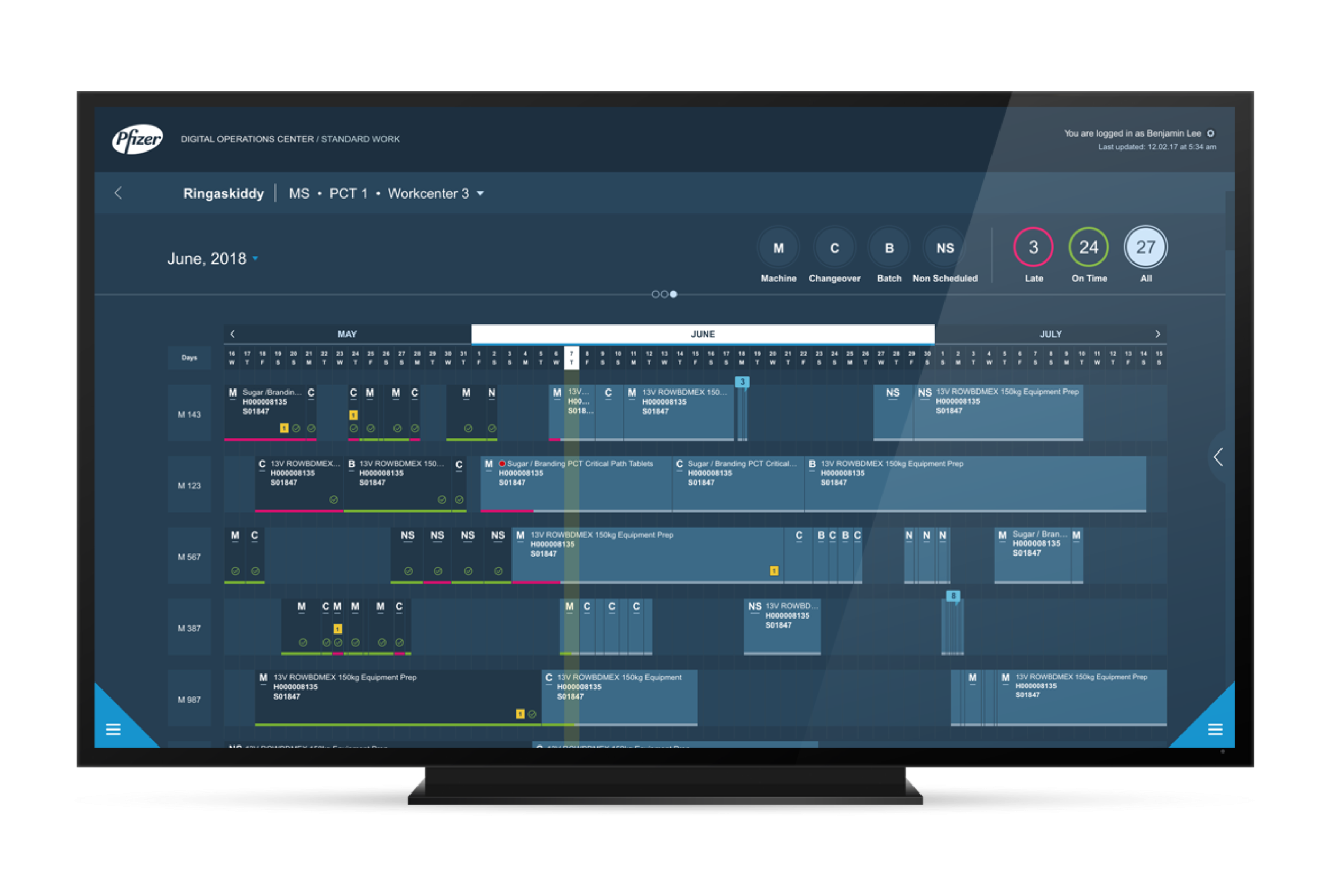
THE PROBLEM
Pfizer was in the midst of a Digital Transformation when they came to us. What do I mean by Digital Transformation? They literally transformed every facet of their business by going digital through a suite of applications that they could use by their employees worldwide. In total, there were 7 applications that Avanade was employed to work on through this engagement; from initial user research to concept and final build, we were there. These applications range from monitoring the process of making products such as Advil, assessing manufacturing plants to ensure the maturity of the plant, dashboarding tools to monitor production, ingredients and many other applications to fill out their digital transformation strategy. In a nutshell, we were tasked to build web applications and essentially software for their entire business. We worked with the U.S headquarters in the U.S; this meant frequent trips to the U.S for client presentations and face-to-face time with users and other team members not located in Toronto.
The problem that Pfizer was facing was that all of these processes were manual, labour intensive, paper and whiteboard processes that were in need of transform.
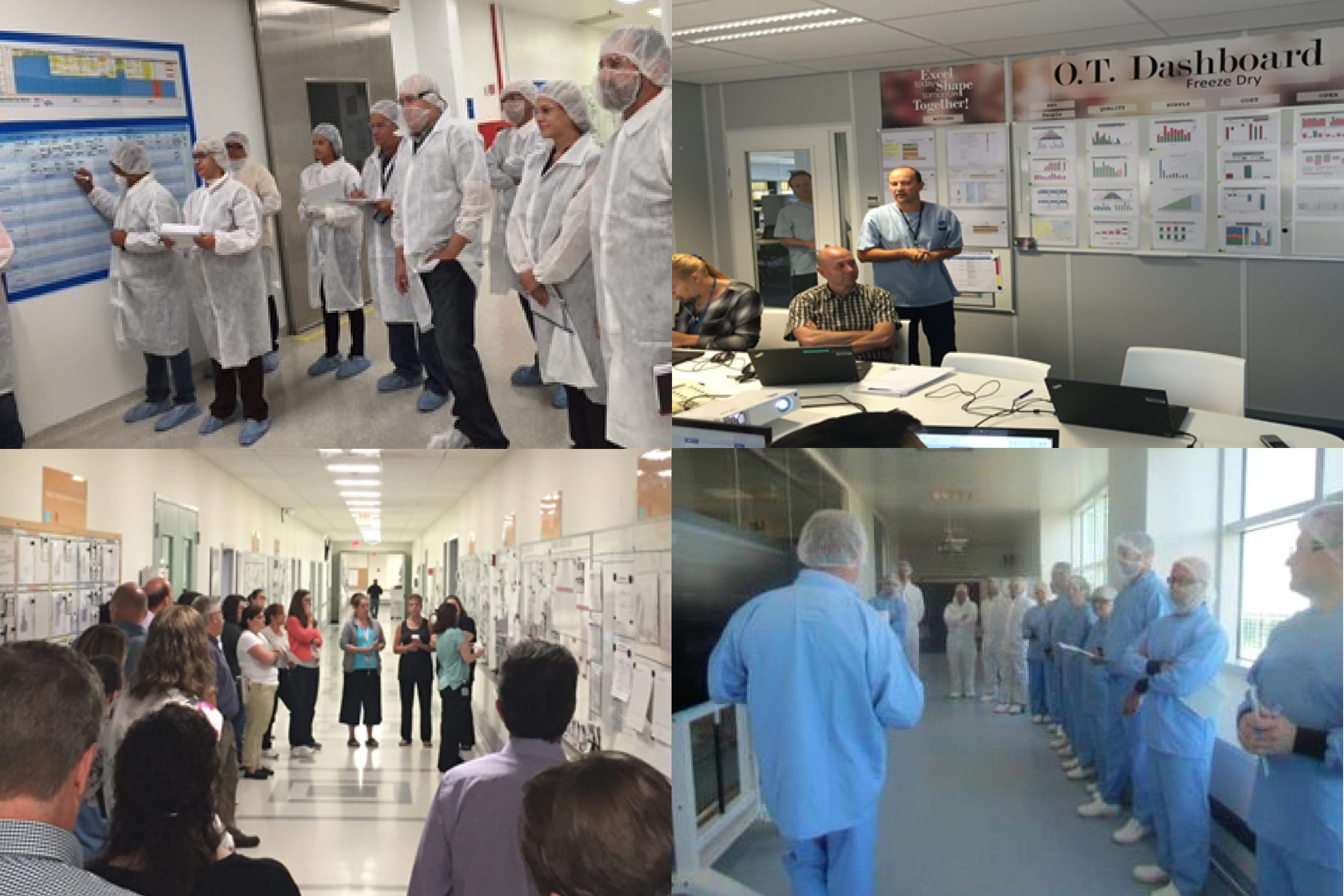
SOLUTION
We were to build a full suite of digital applications for the SurfaceHub and Desktop that would essentially transform the way Pfizer runs all of their manufacturing process, from paper-based to digital. This would connect every single manufacturing site across the globe through the digital transformation suite of applications, and would allow Pfizer to move with the times and make rapid iterations on their software, anytime, anyplace.
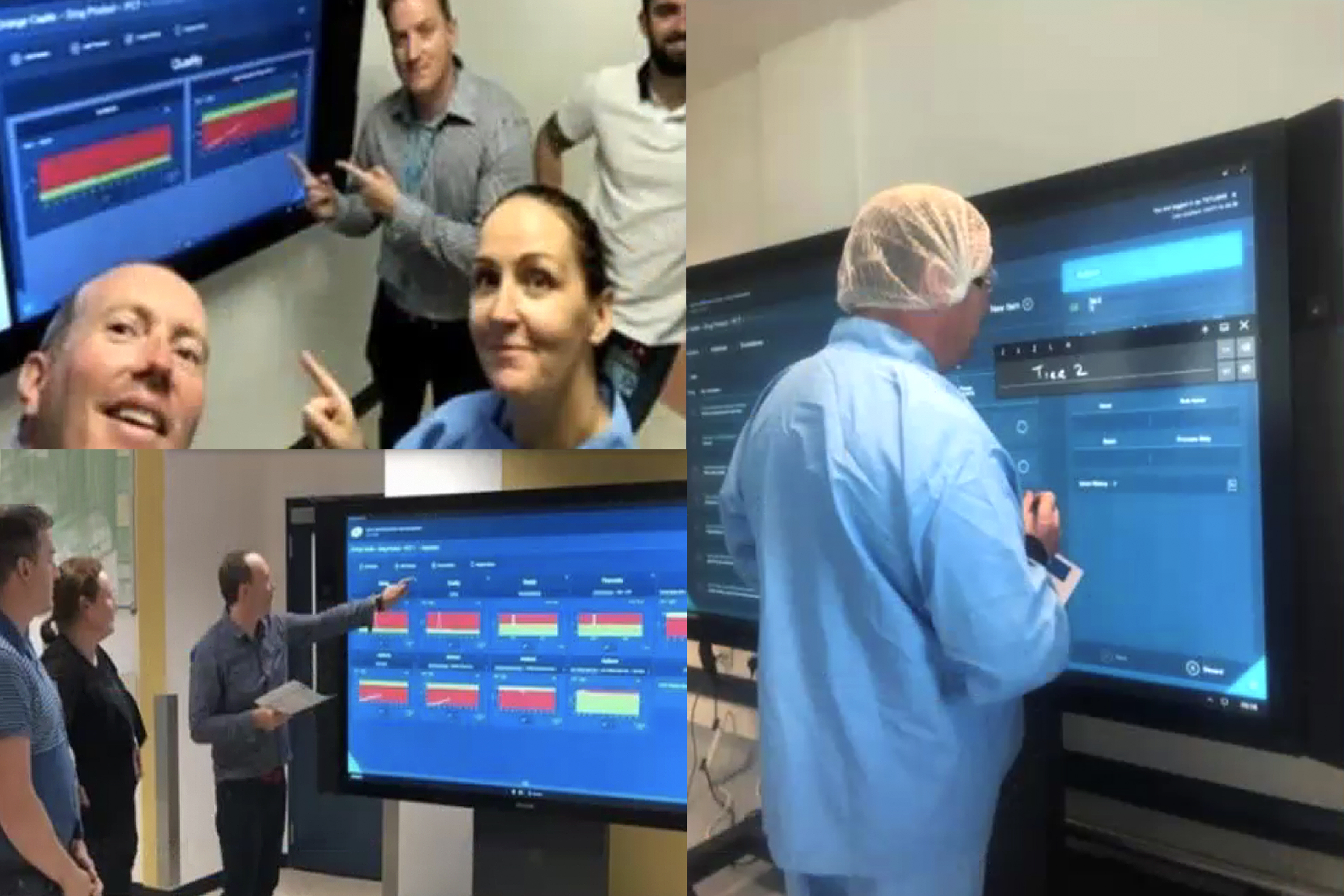
MY ROLE
I took part in a year and a half long client engagement with Pfizer as the Creative Director on the project. Quite frankly, my responsibilities changed throughout the life of the project. Most times, I was leading, mentoring, supporting my design team, and running client presentations for buy in. Other times, I was building out prototypes for users and usability testing. Essentially, my job was to be the voice of the design team on the project, ensuring work is at a high level while delegating tasks, taking part in estimation and working with product teams on user requirements. Another big task was to lead and implement the production of the design system for this suite of applications.
To be frank, we only had a few design resources allocated to this project, which made things challenging to say the least. I was acting as both Creative Director and designer (when needed) to crunch out work to meet deadlines. I also took part in UI and UX activities including sketches, wireframes, flowcharts, sitemaps, design thinking workshops, interactive prototypes, testing, page description diagrams, hi-fidelity mockups, etc…
I am proud of the team members that I had the chance to work on with on this project, and am proud of my leadership and the design work that we accomplished in the time that we had.
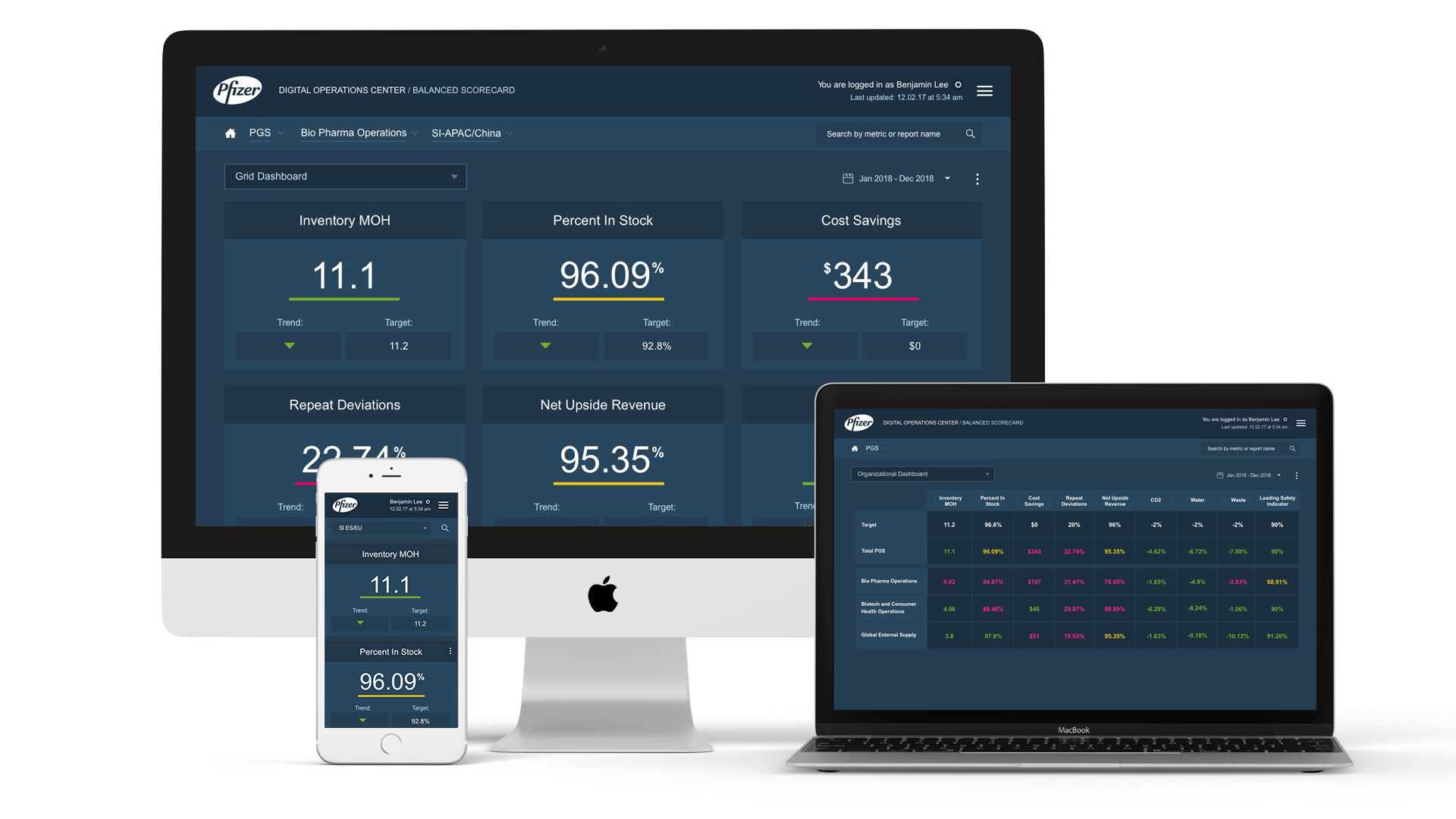
CHALLENGES
Because of the nature and size of this large project, it had developers, product owners, project managers, users, designers and everyone else in between in different locations. As you would might imagine, this presents its own set of challenges. One of the most obvious challenges was, how do we design, test and do usability testing with users that are at manufacturing plants in Ireland, Belgium, Singapore?
Another set of challenges was trying to keep a look and feel that was consistent through the entire program because of the size of the project, many teams worked in silo on their own respective apps. It was difficult to keep design and code consistent when you could have had 30 front end developers touch an application, or 8 designers working on their own design patterns when there could have already been a pattern established in the design library and UI Kit. In such a fast-paced project that was to touch so many users, we needed to get things right. It’s quite difficult working with design and development teams all over the globe. India, Poland, New York, Seattle… you name it. We had our work cut out for us being located in the great north, Toronto, ON, Canada.
Another set of challenges was the fact that each of these manufacturing sites had a different way of interpreting, using and accomplishing tasks for each of these apps. How do you get introduce new software to 150 manufacturing sites, asking them to adopt a new way of working and performing daily, weekly and monthly tasks. How would we roll this out? How does one manufacturing site adopt this new way of working while others haven’t yet adopted the new way just yet?
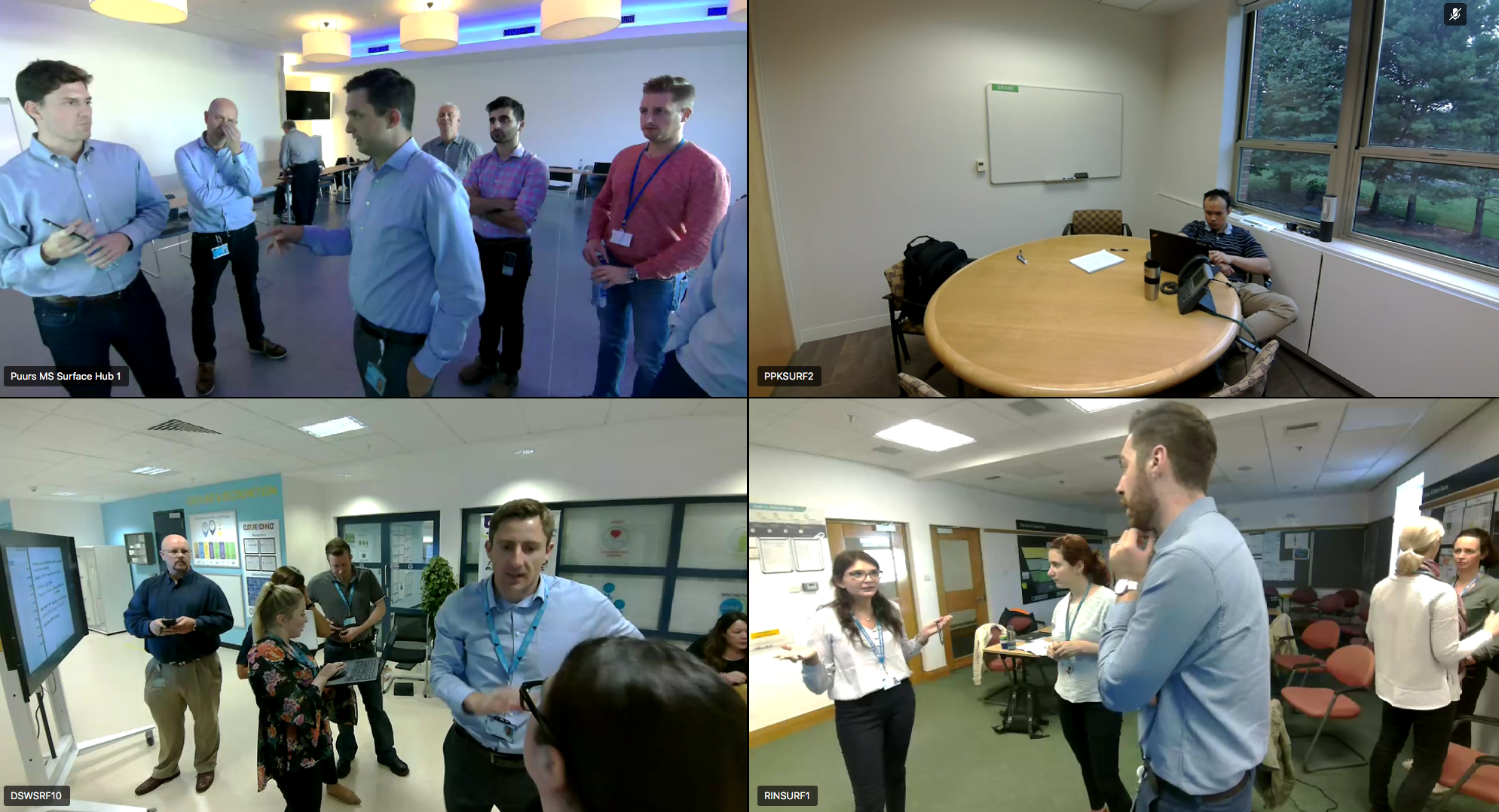
DESIGN PROCESS
Research & Discovery
Much of the research and discovery for each of these different apps within the suite had their own set of unique problems to solve. For the most part, however, research began with business/user requirement workshops to understand what the business was trying to achieve, followed by job shadowing and/or usability research on the way the current system/method worked. Most of the time, this meant meeting with front line workers at the different manufacturing plants across the globe to get a good look and what logistical problem or process within the business they were wanting to digitize.
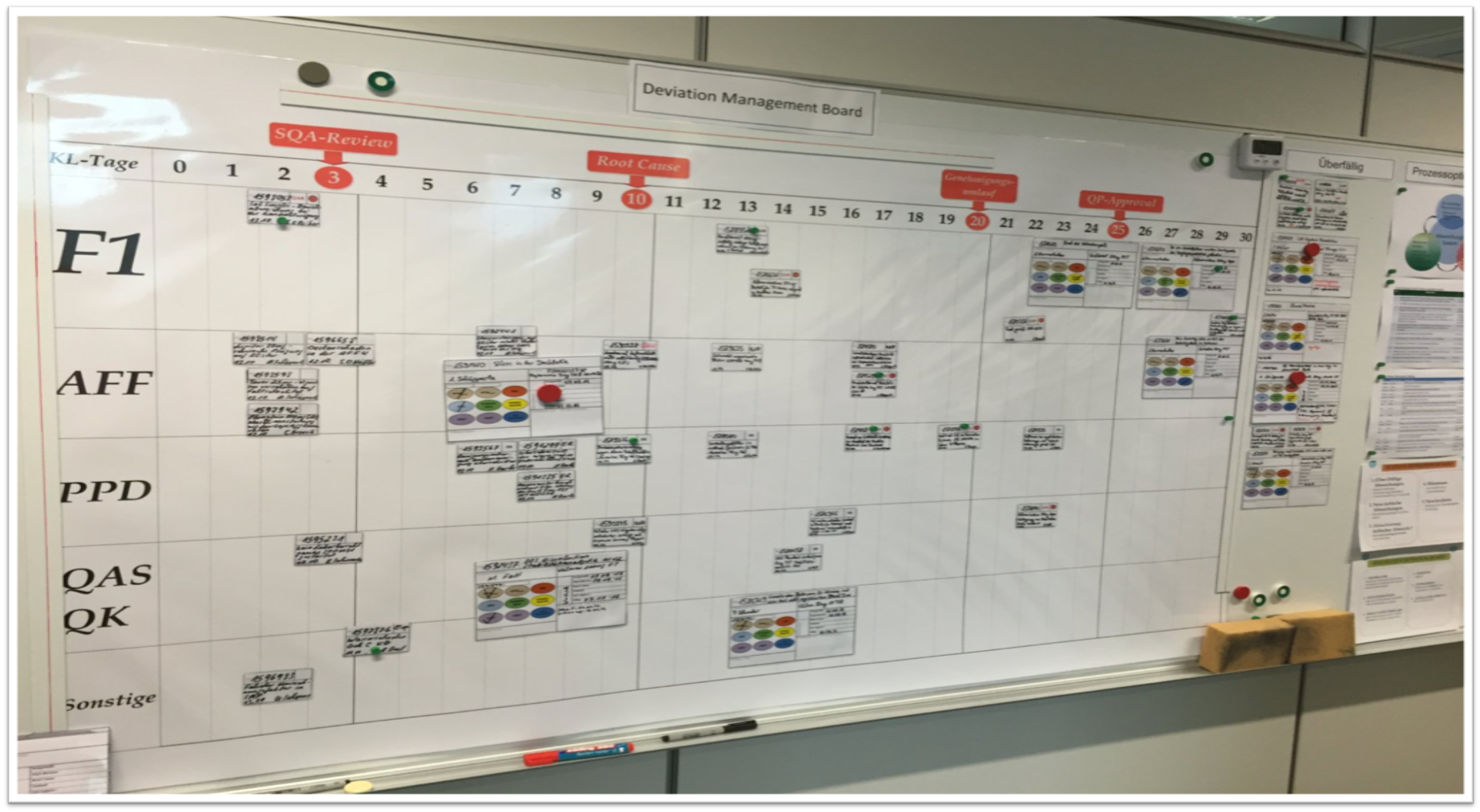

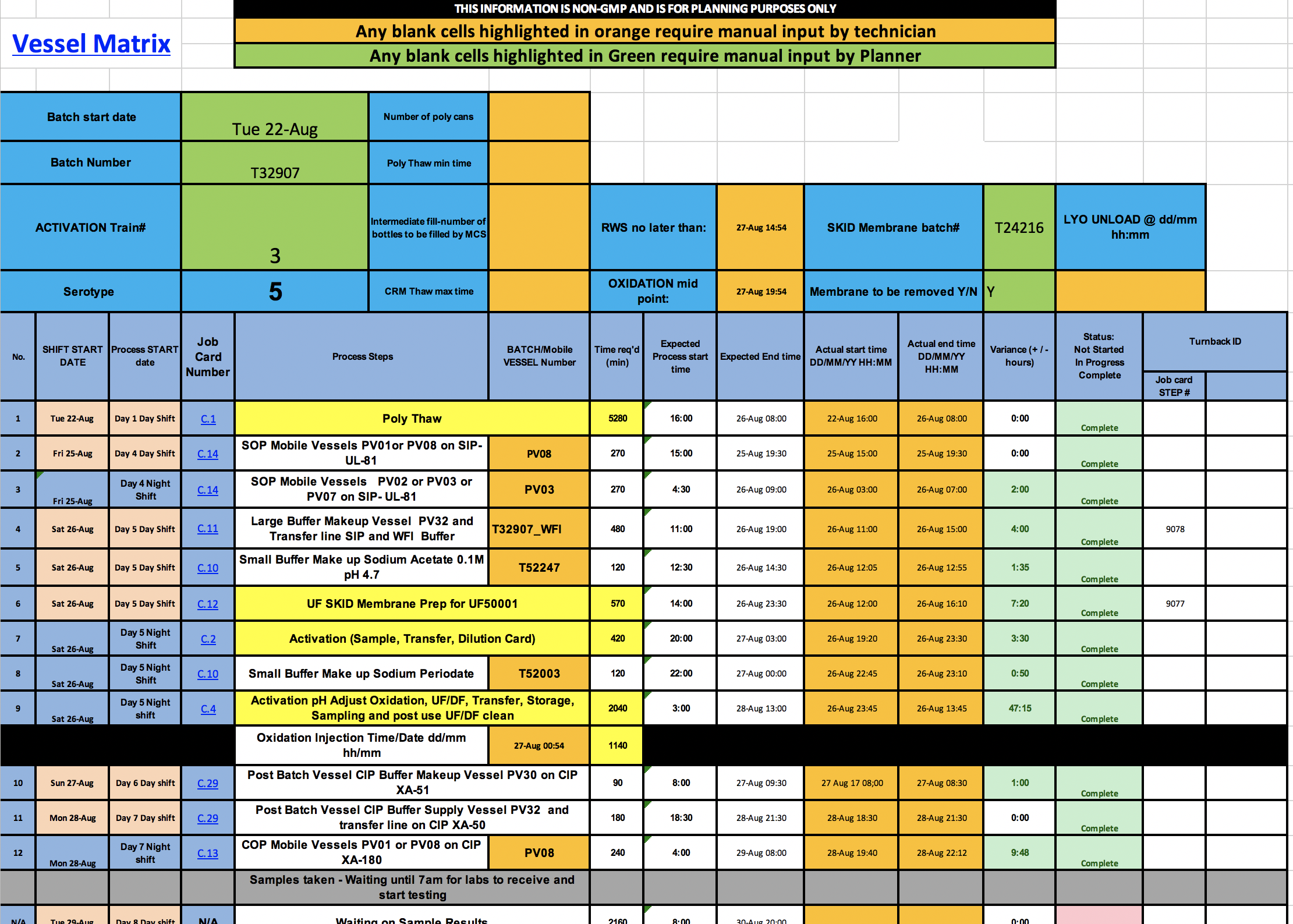
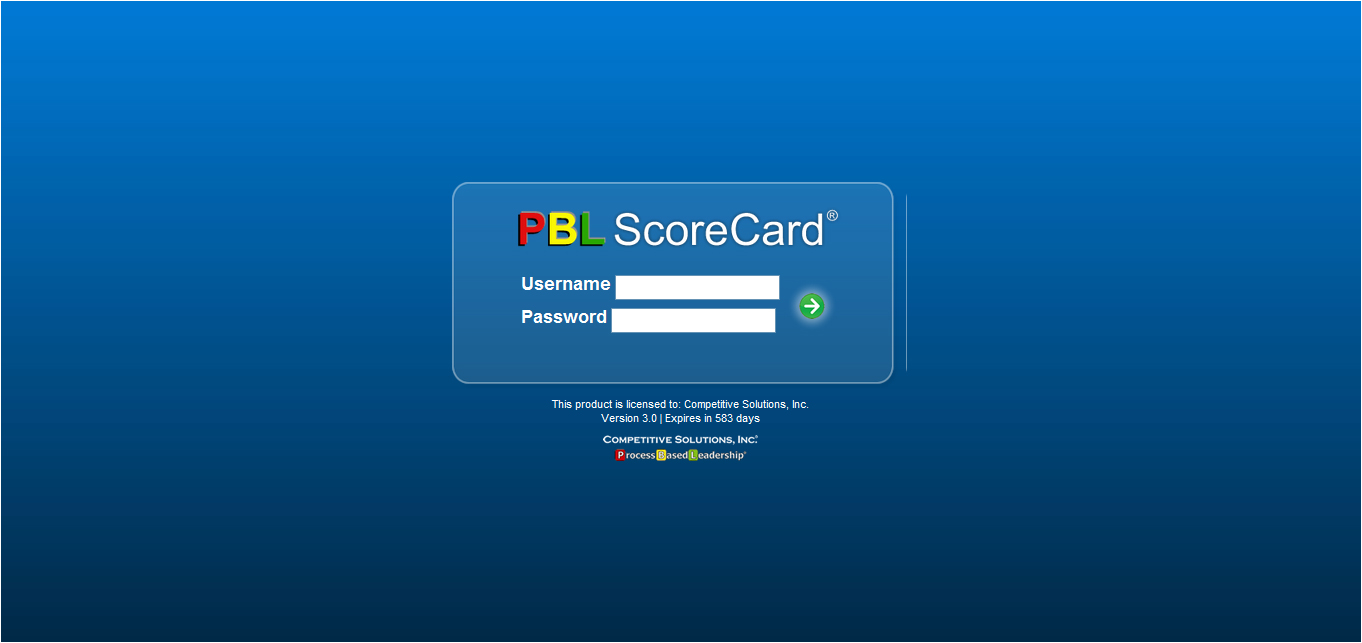
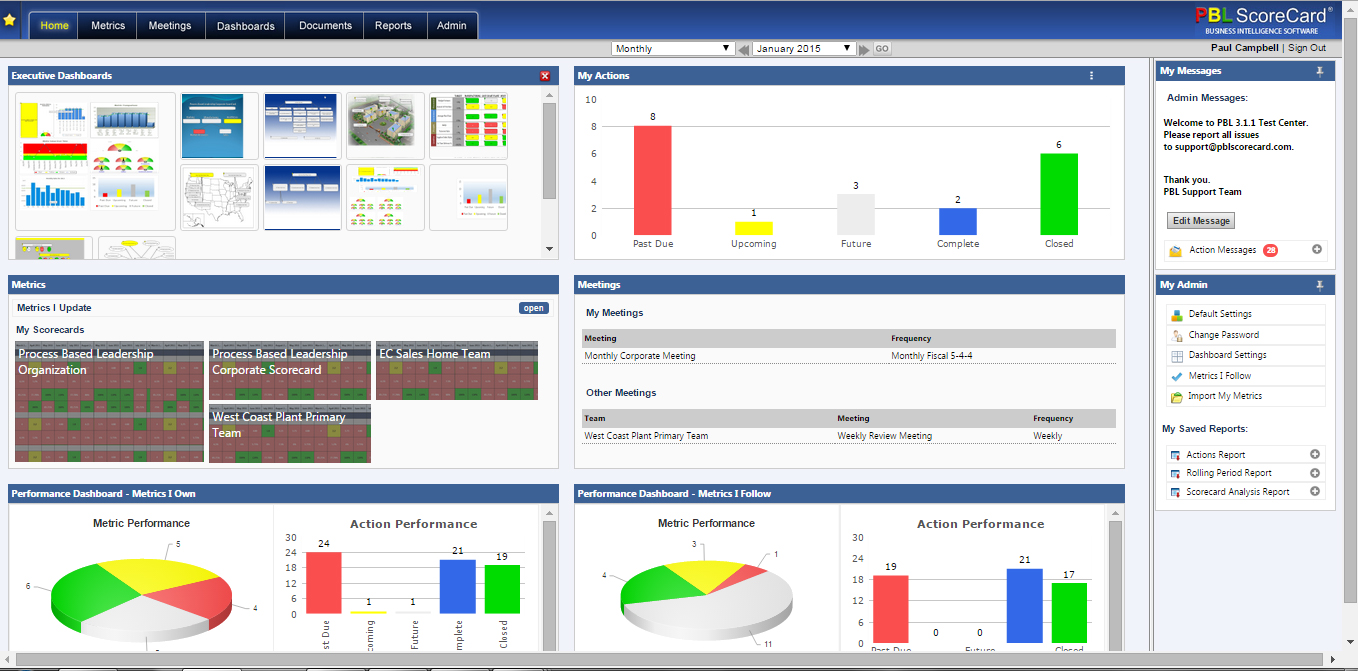

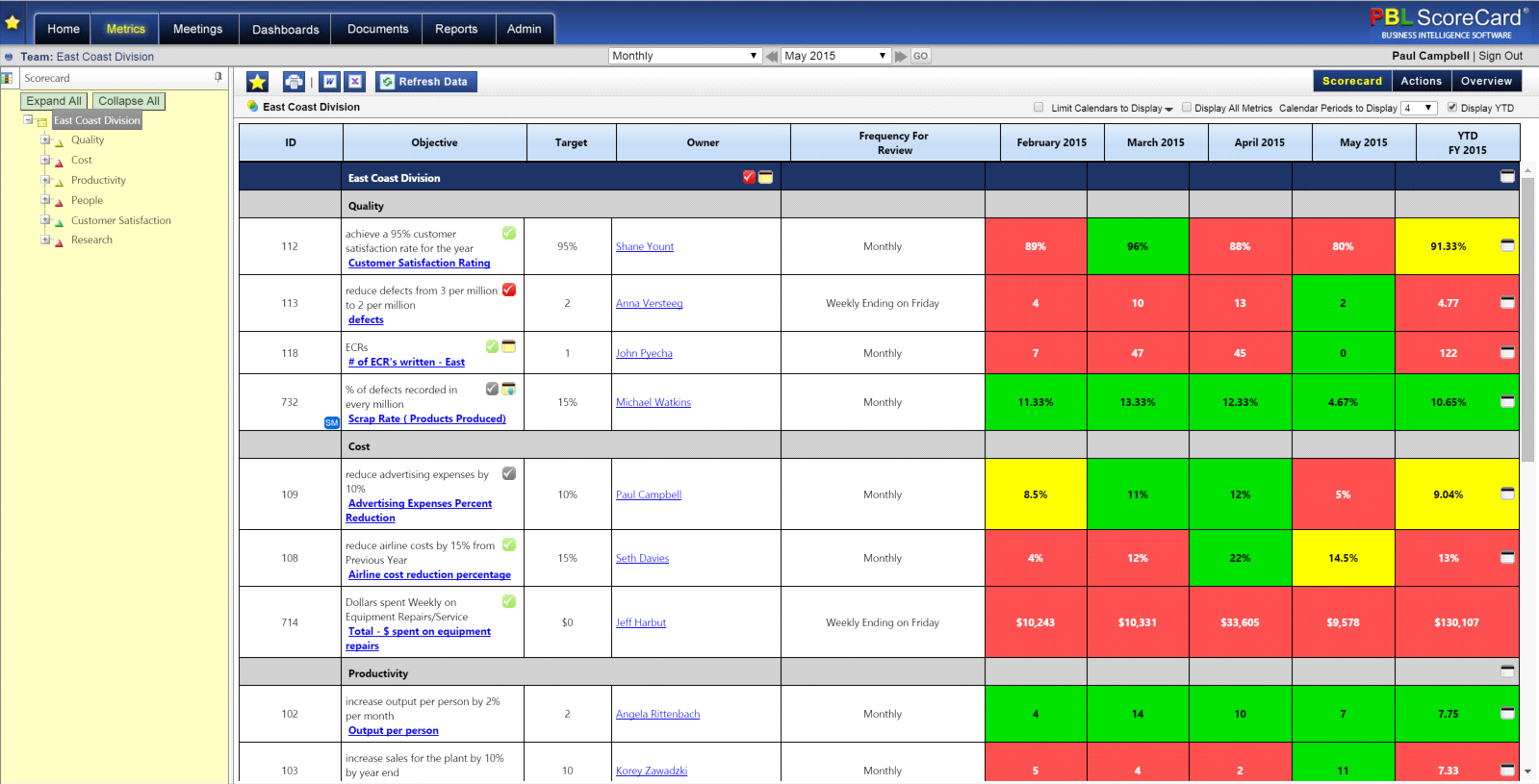
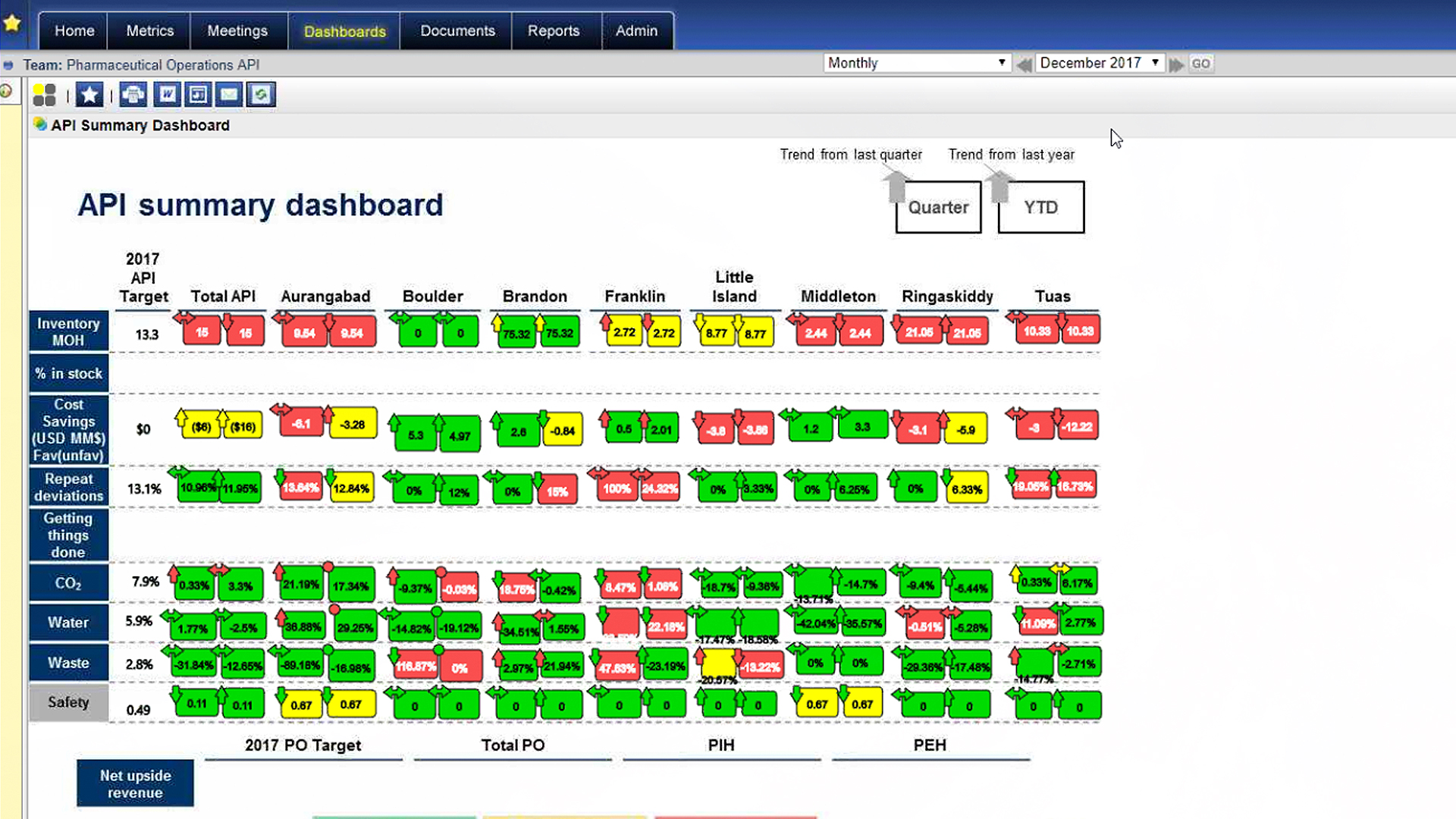
Ideation
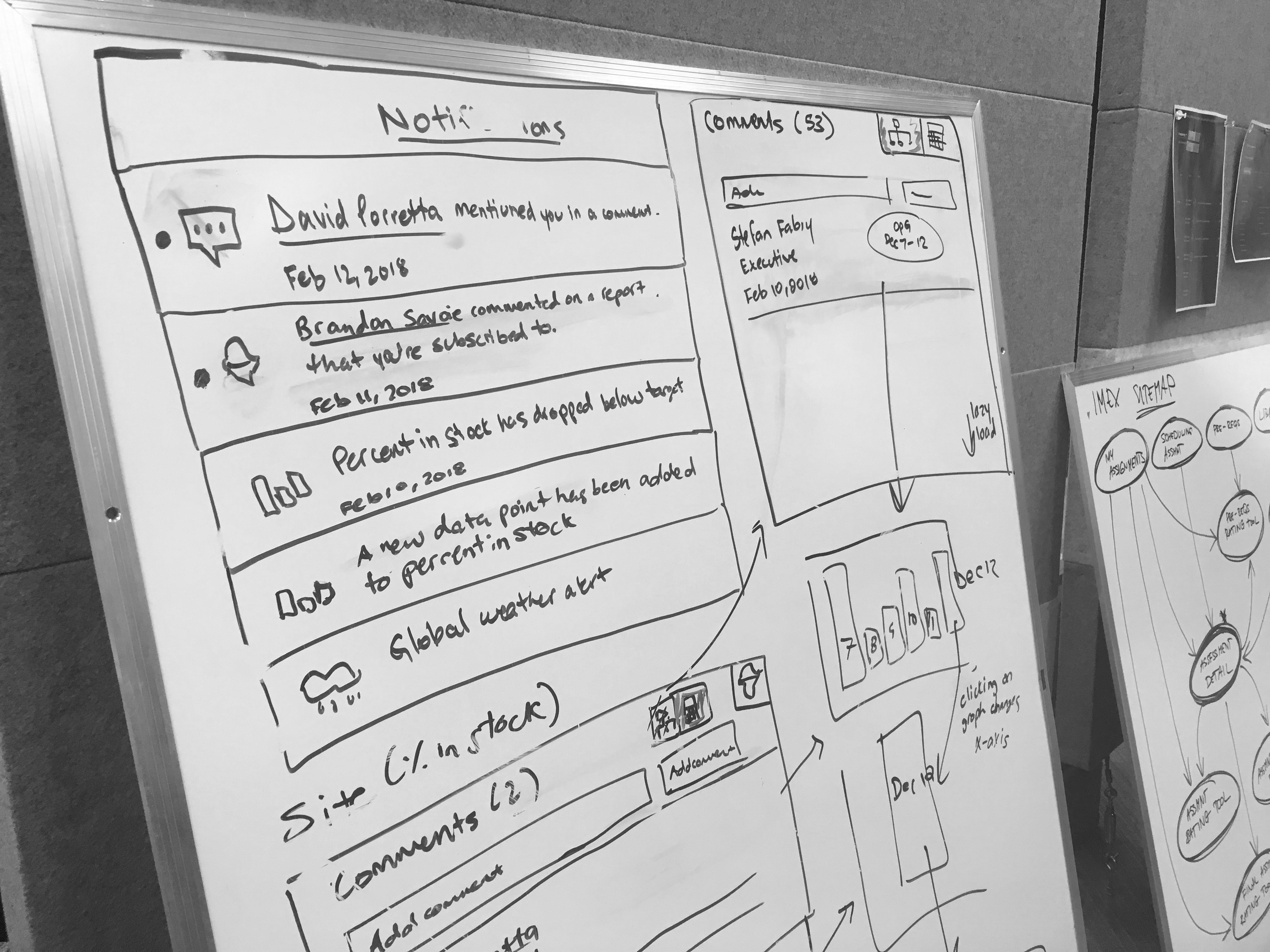
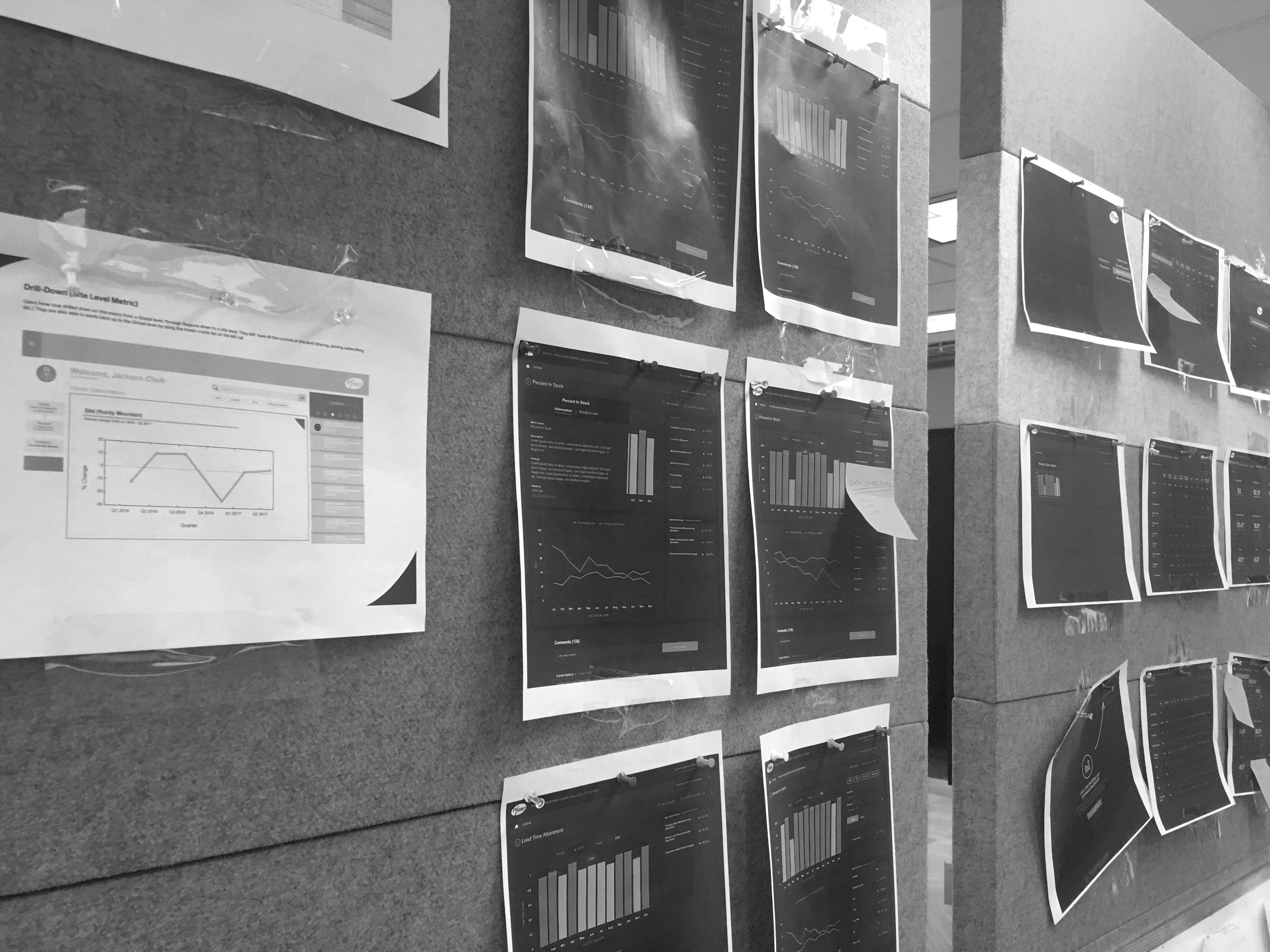
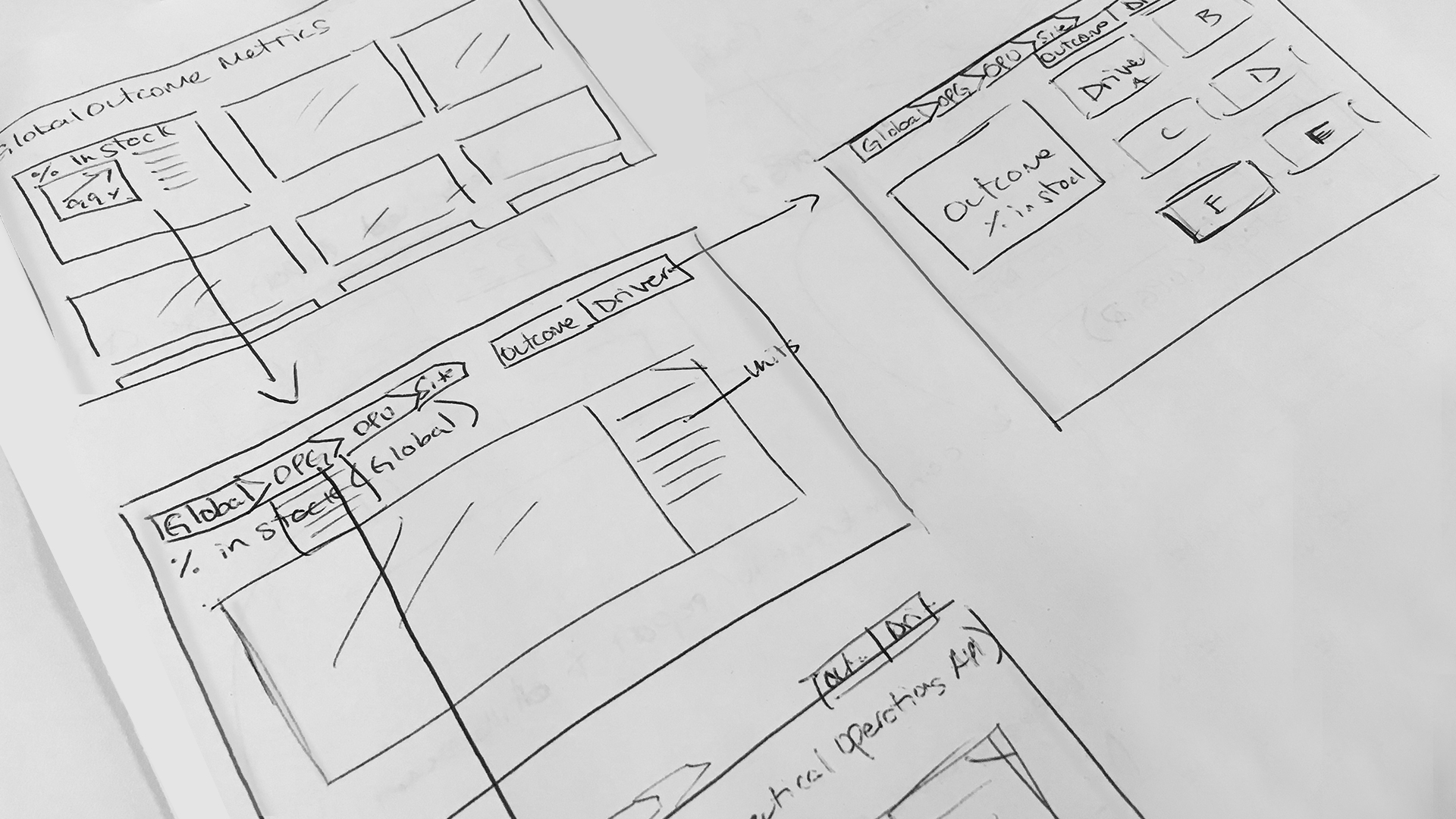
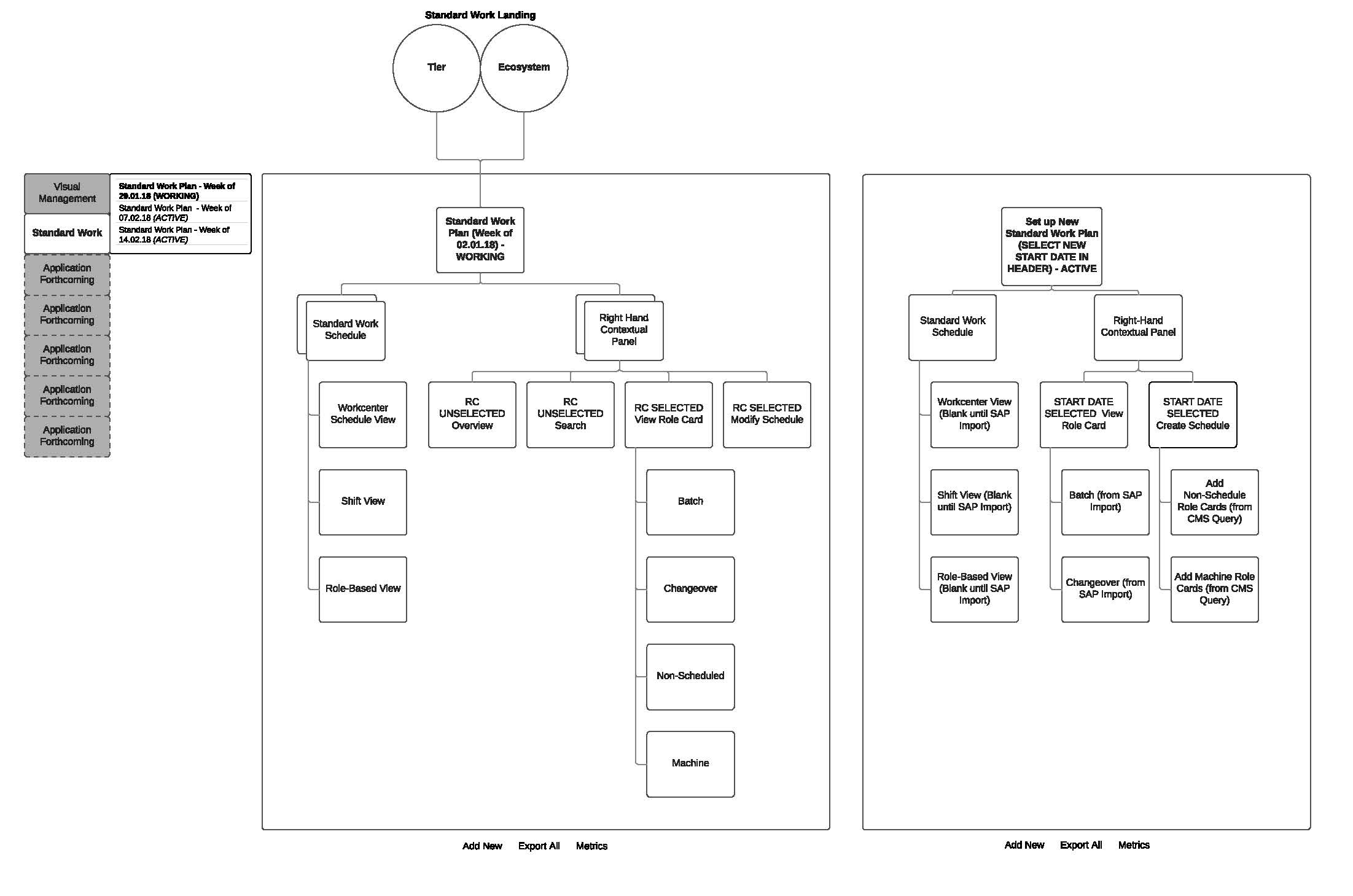
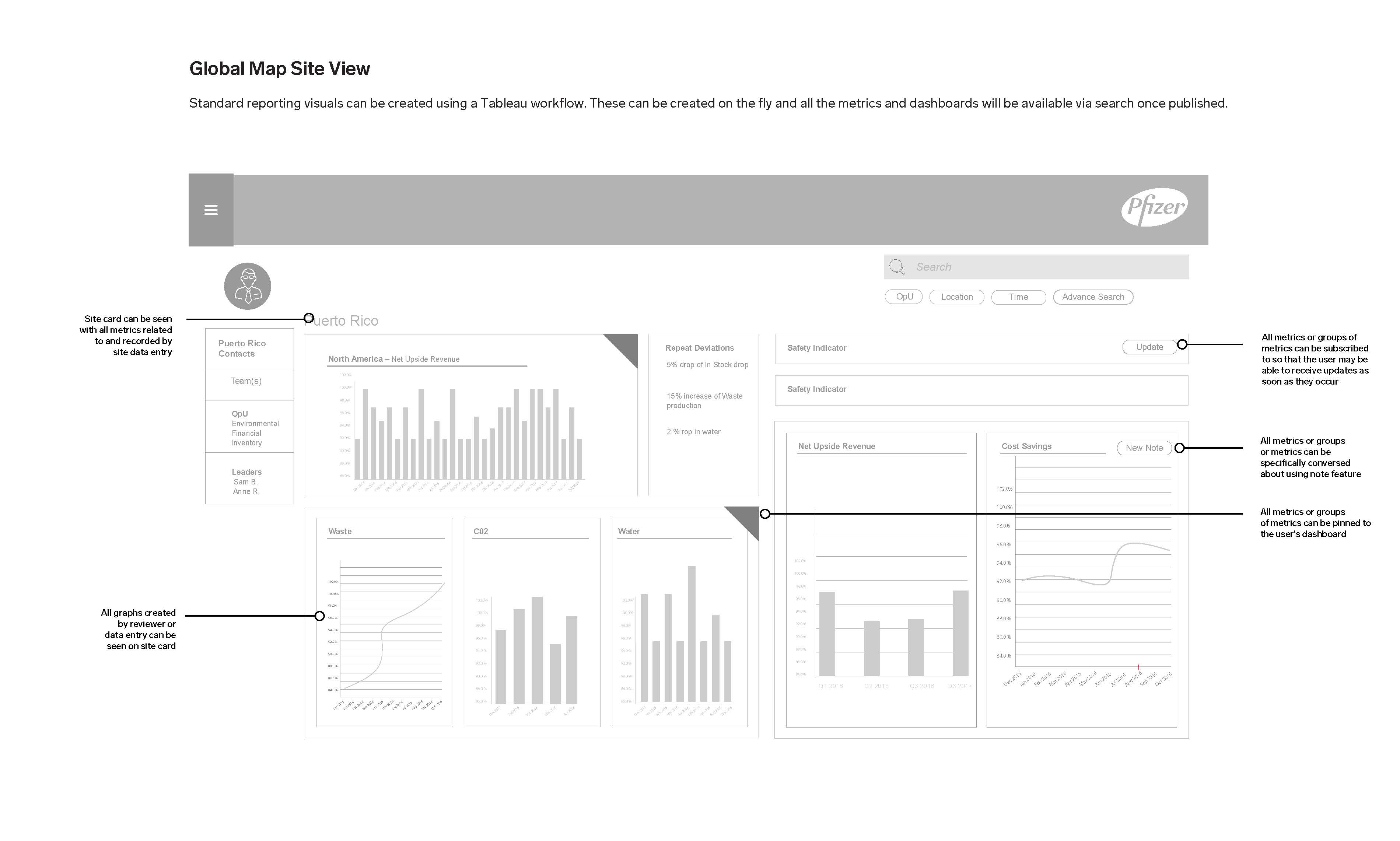

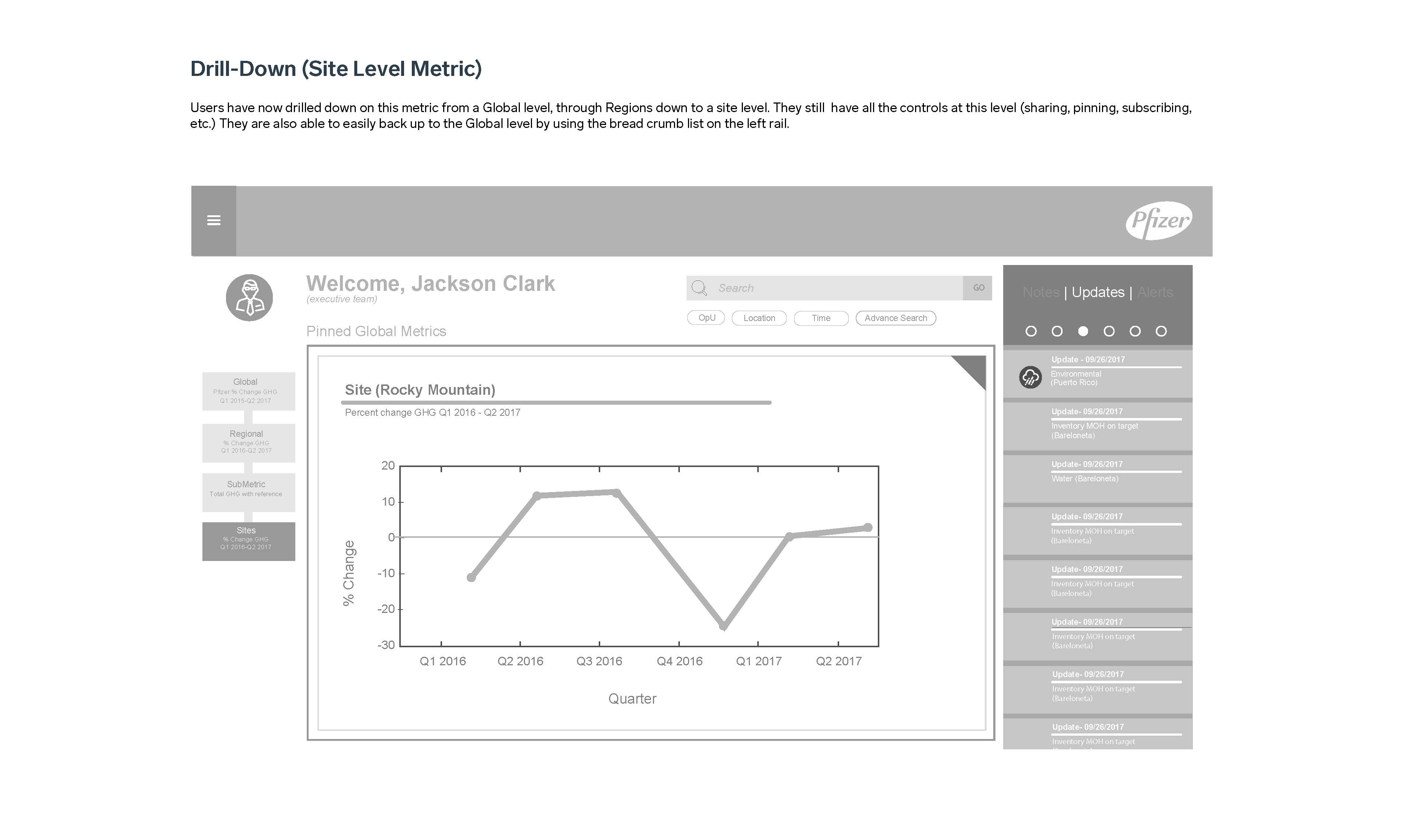
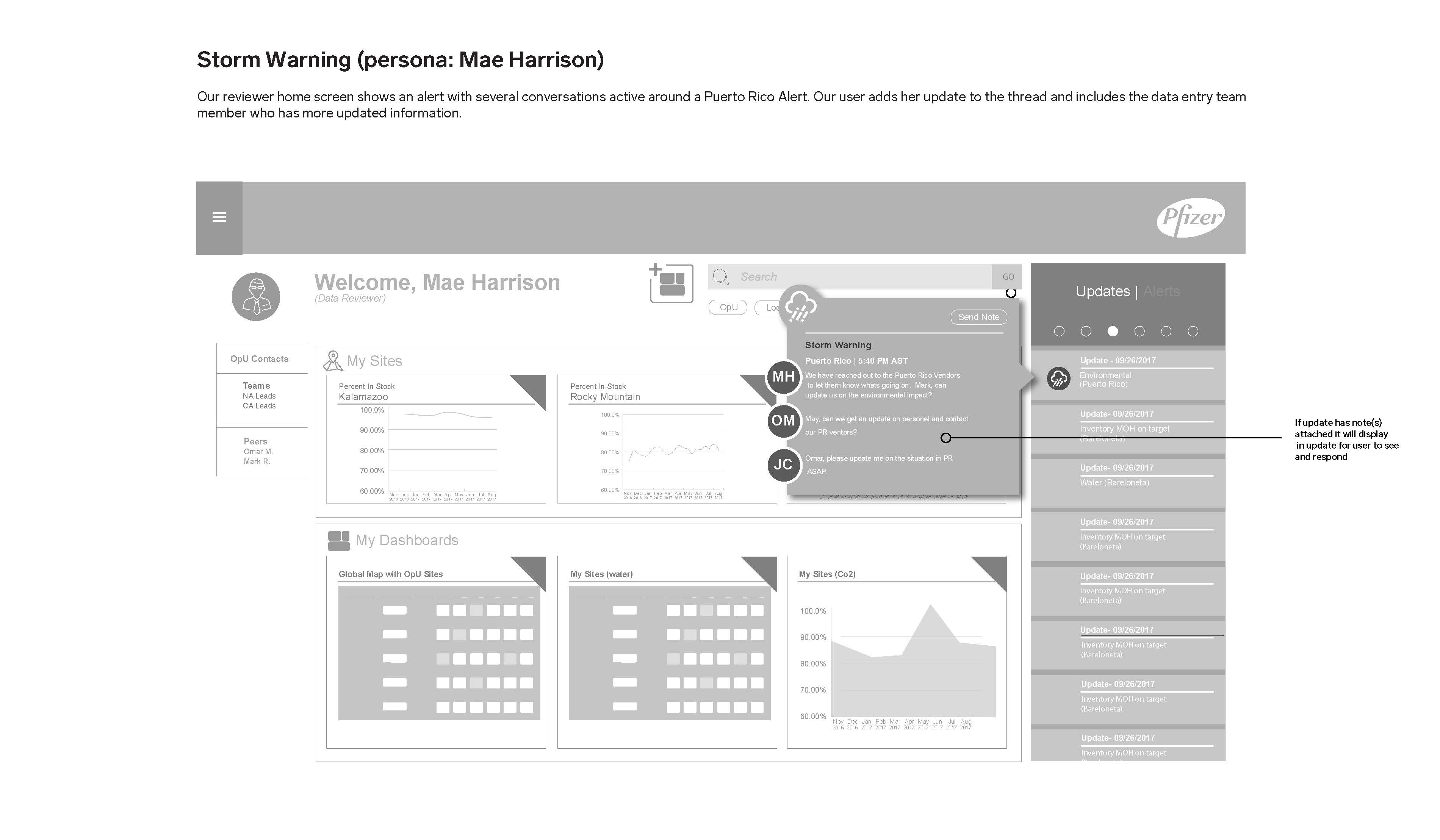


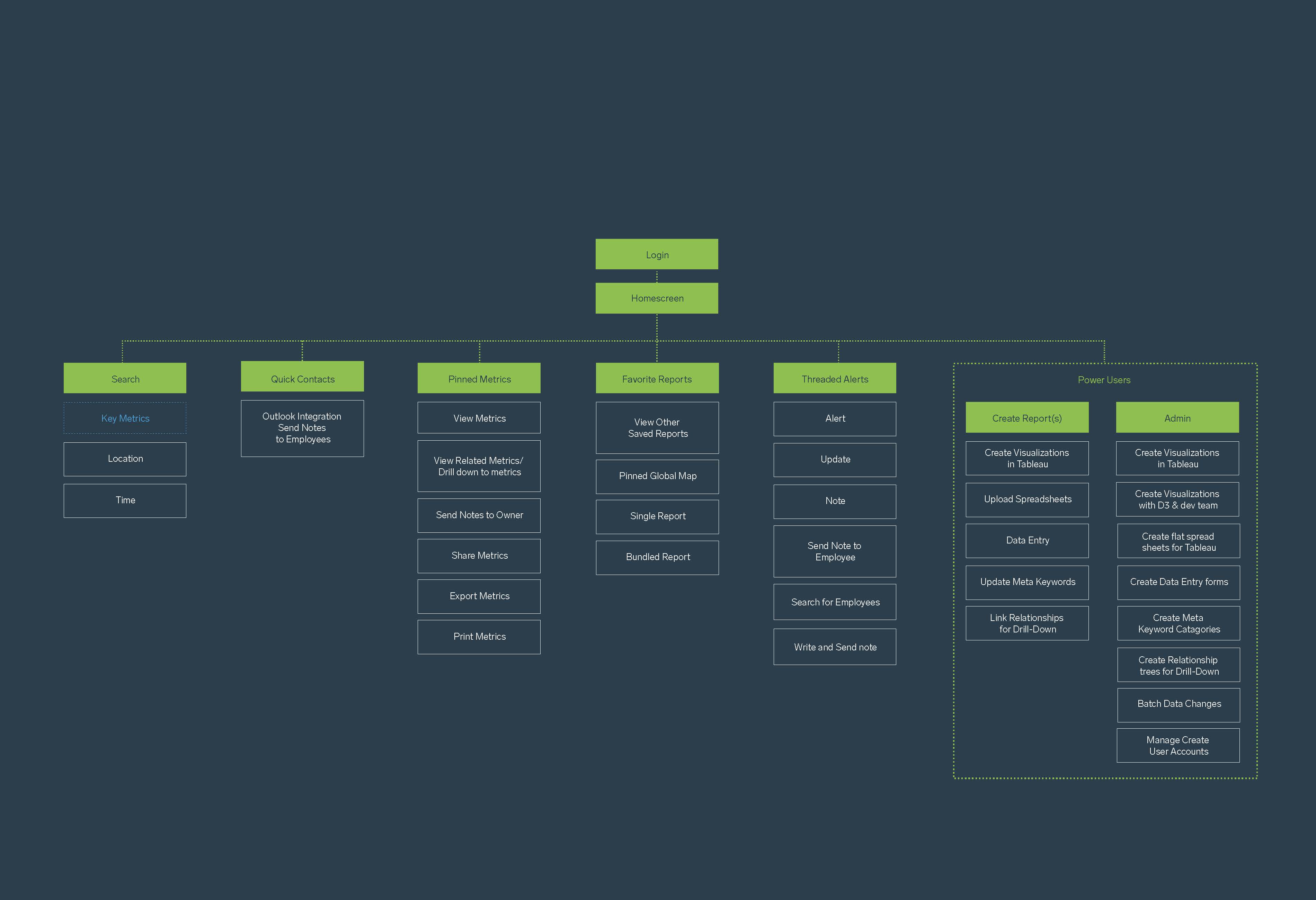
Design

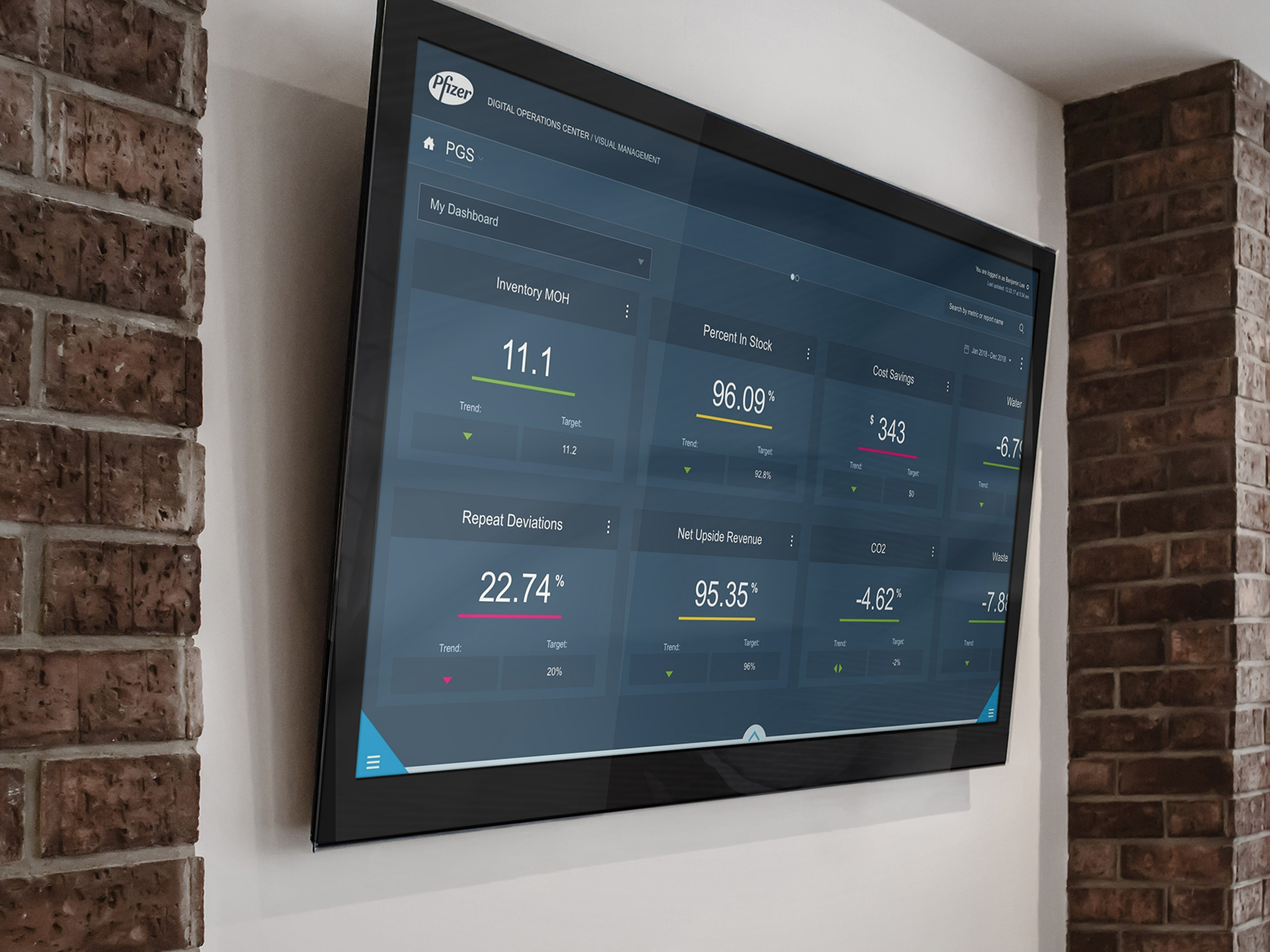
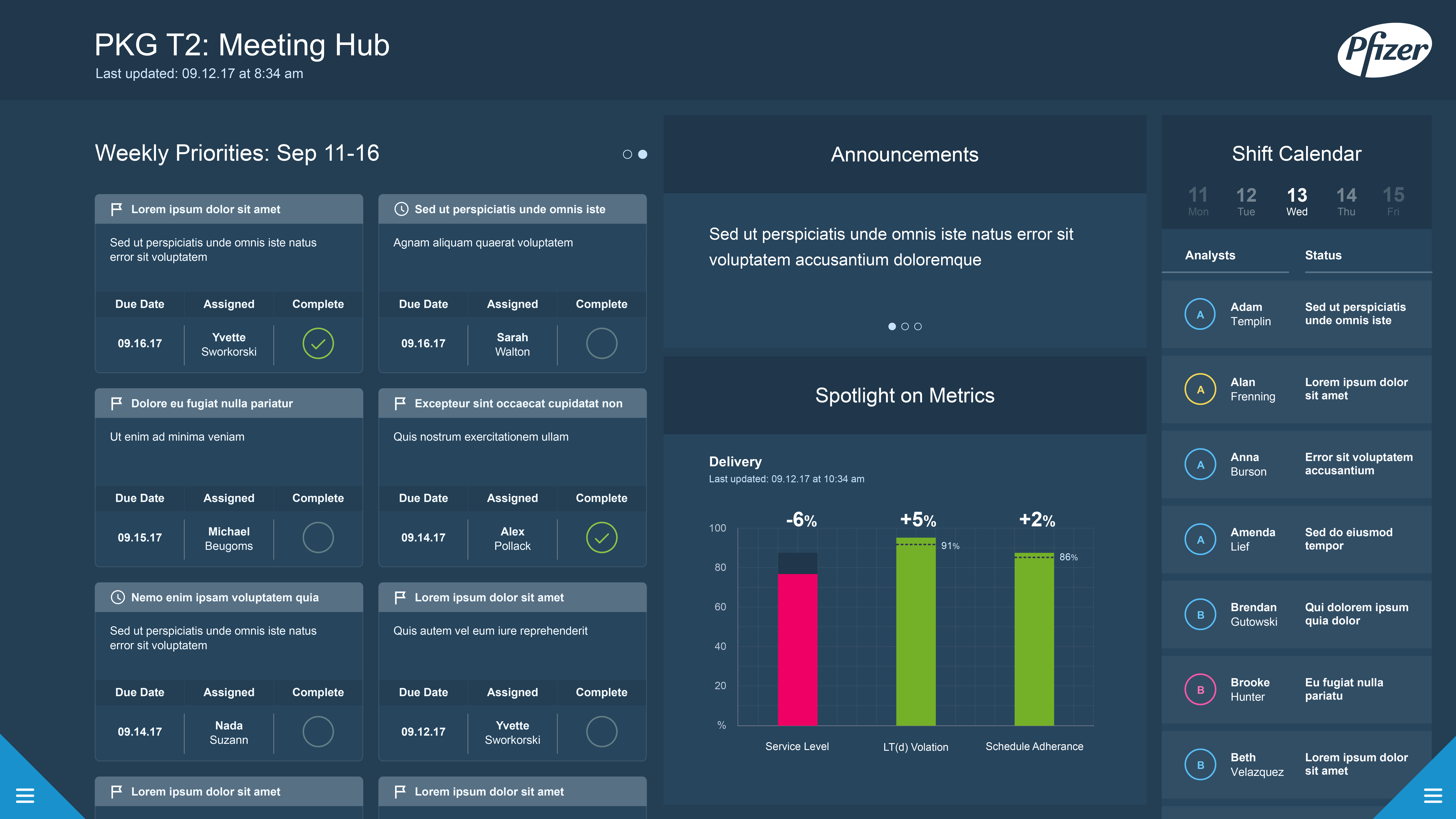
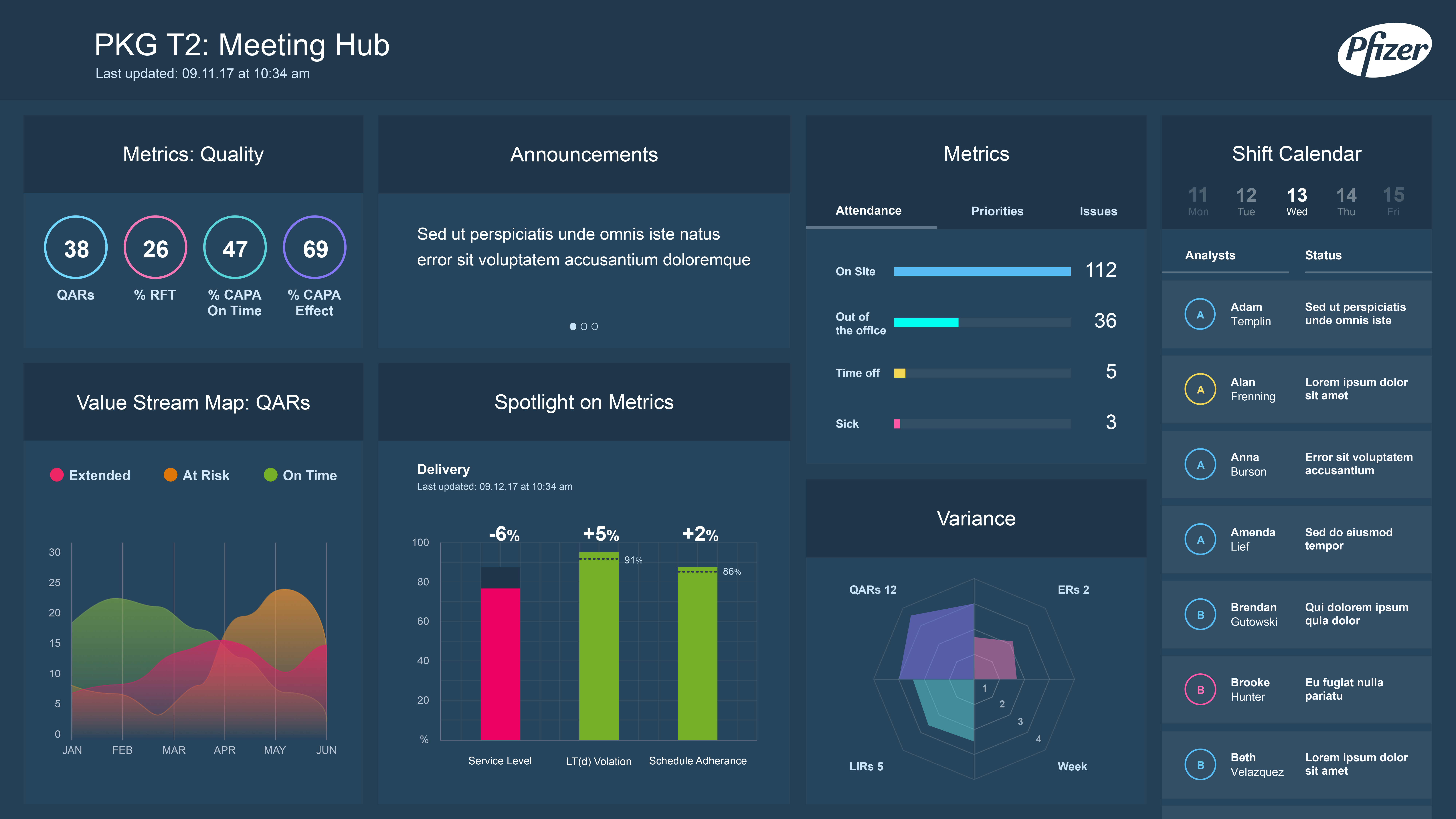
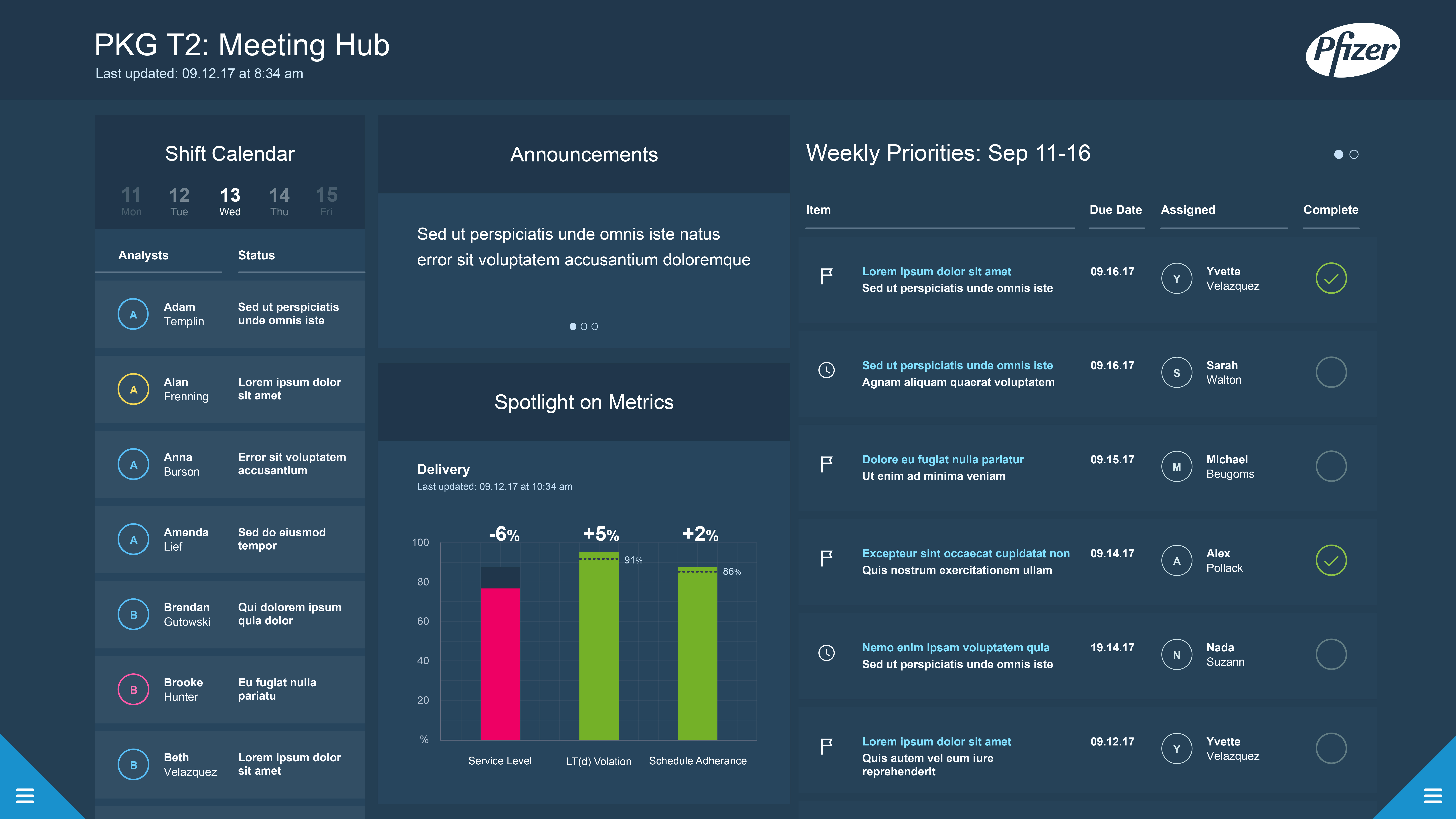

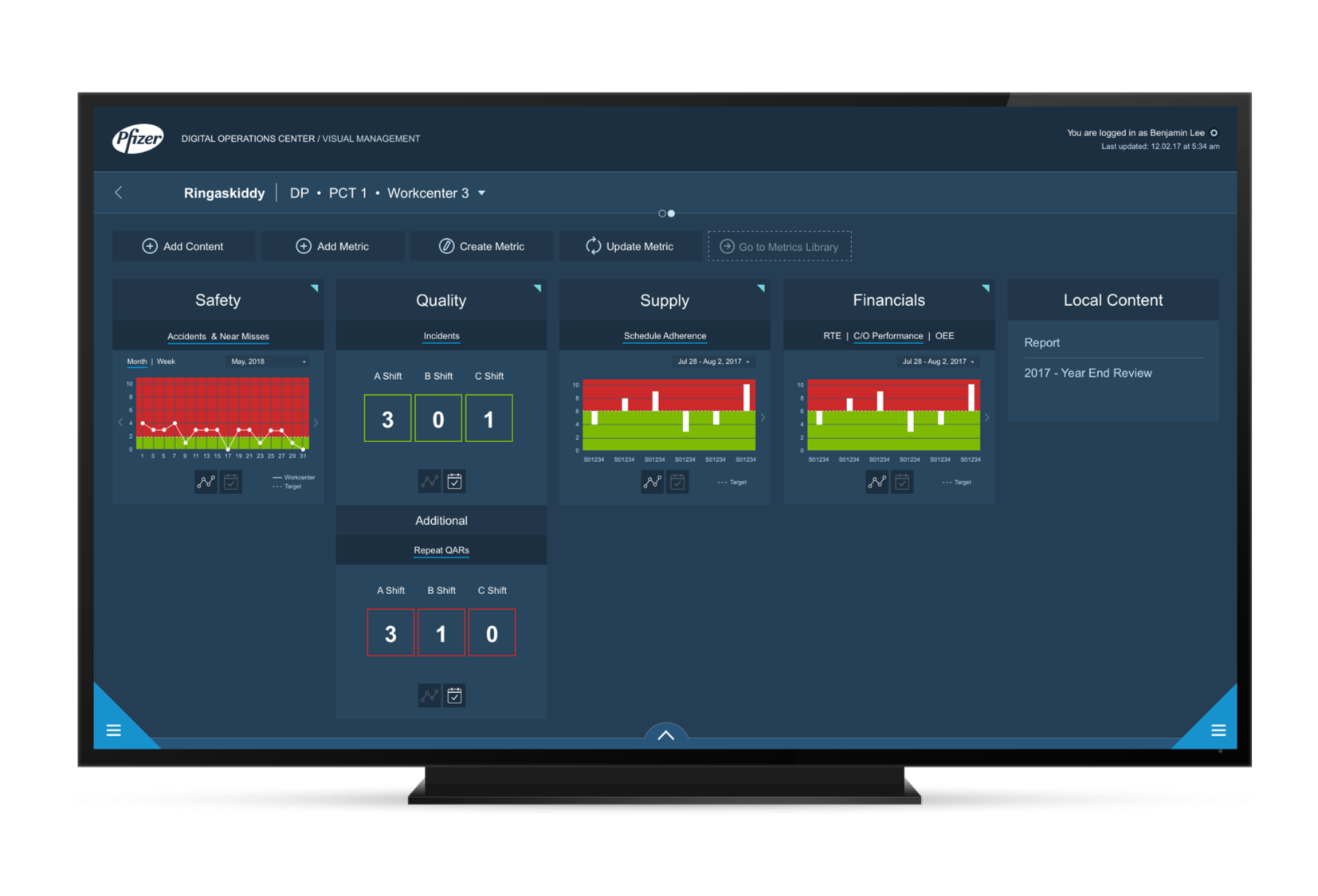

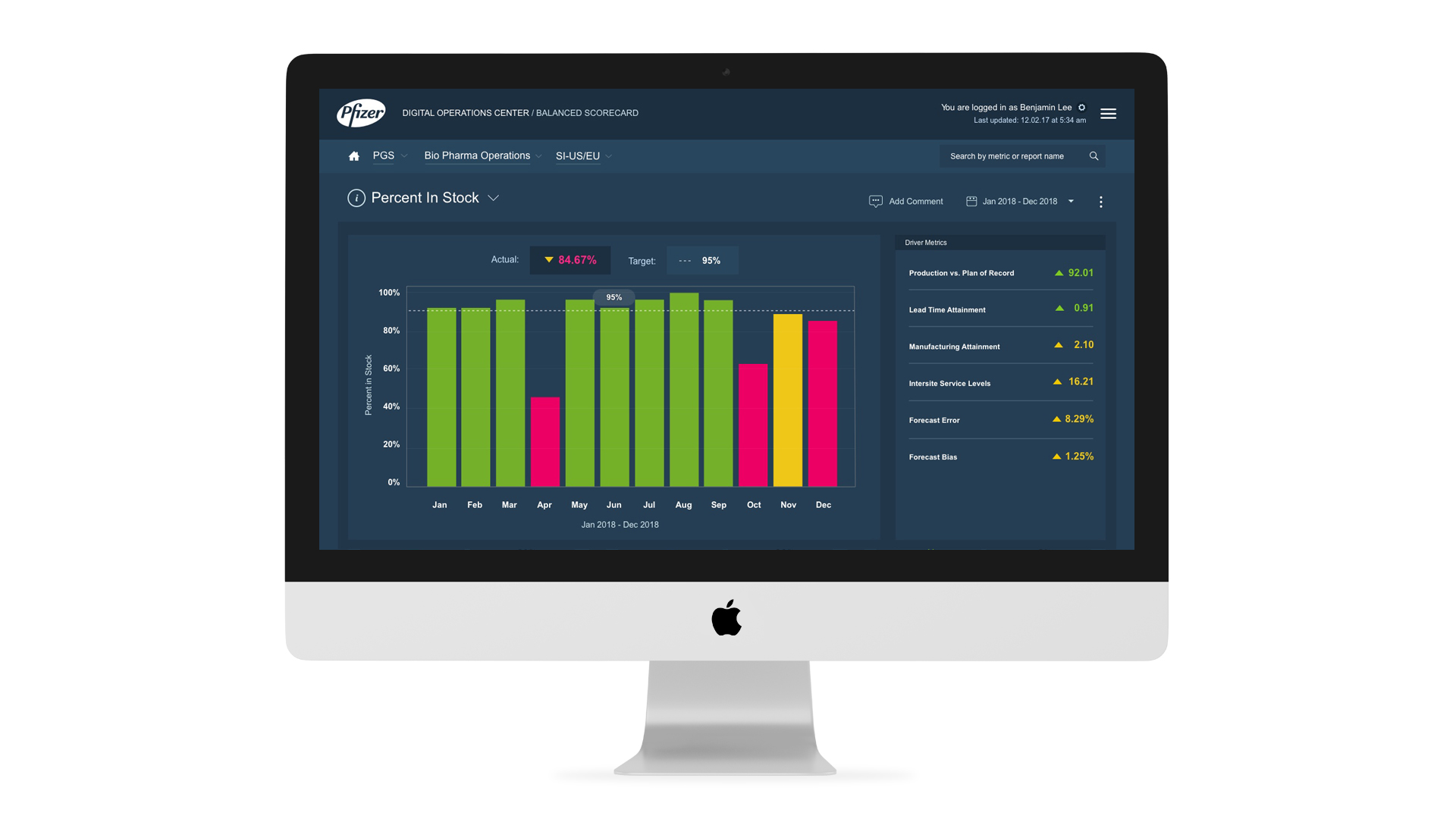
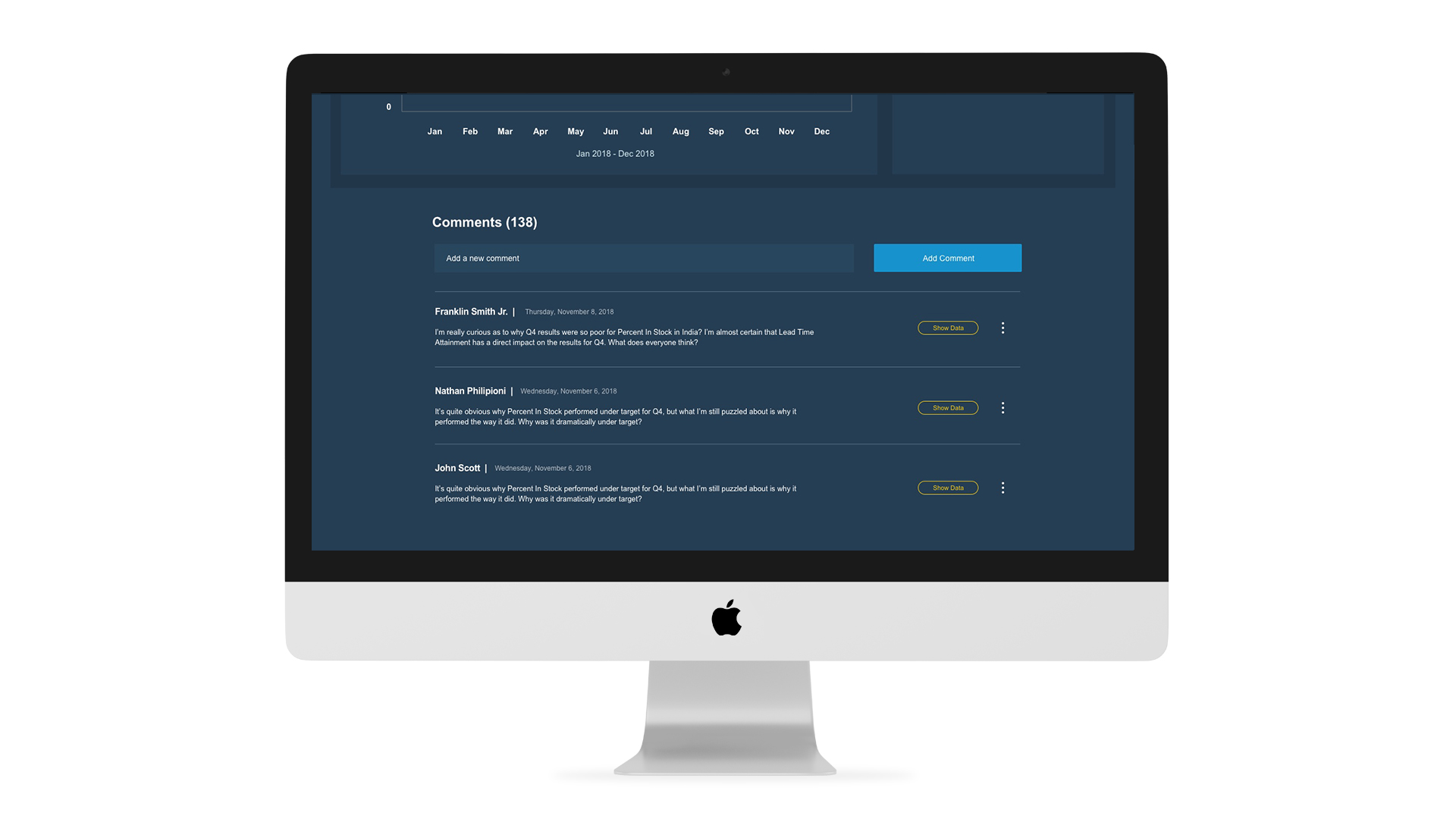

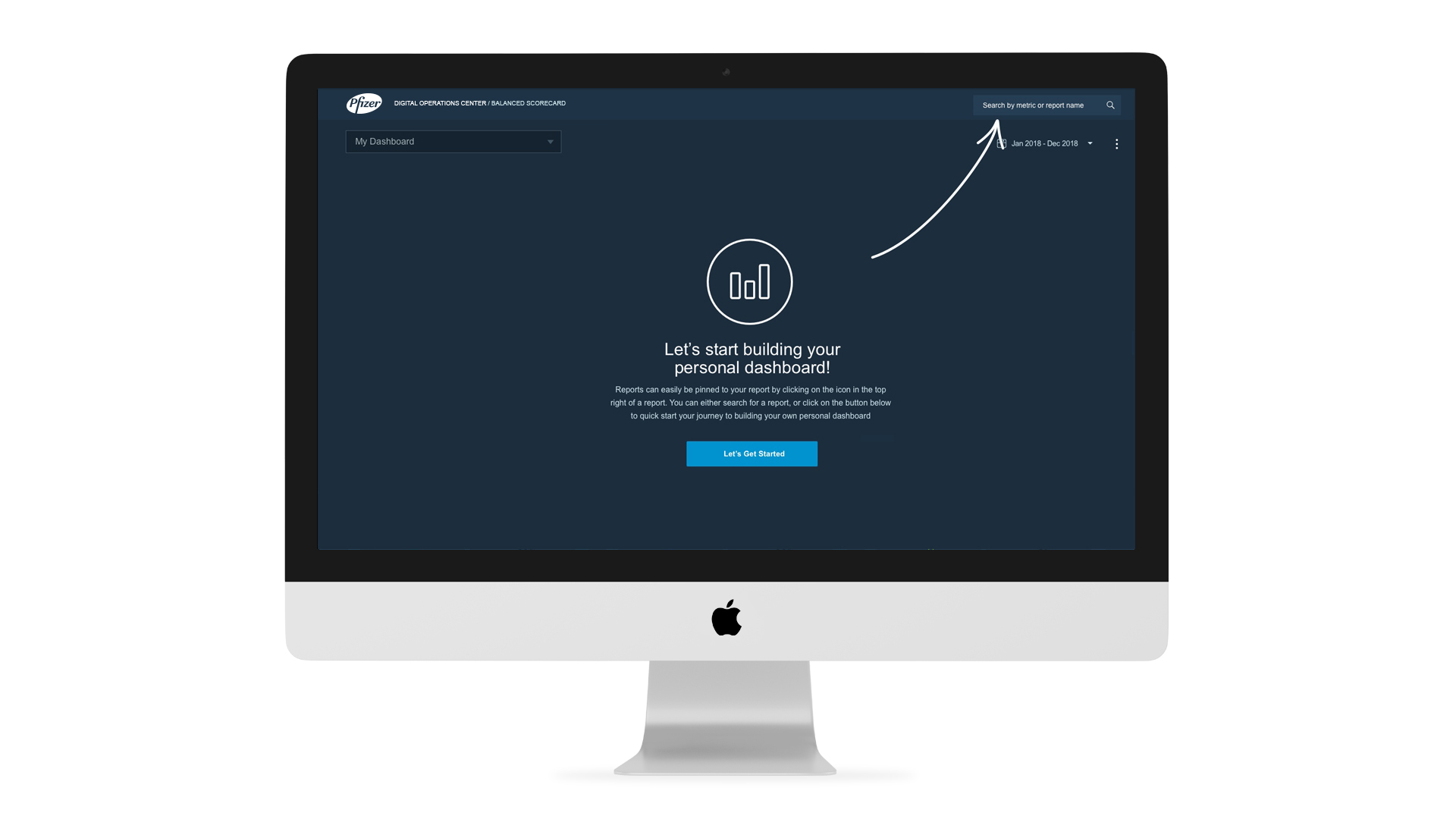
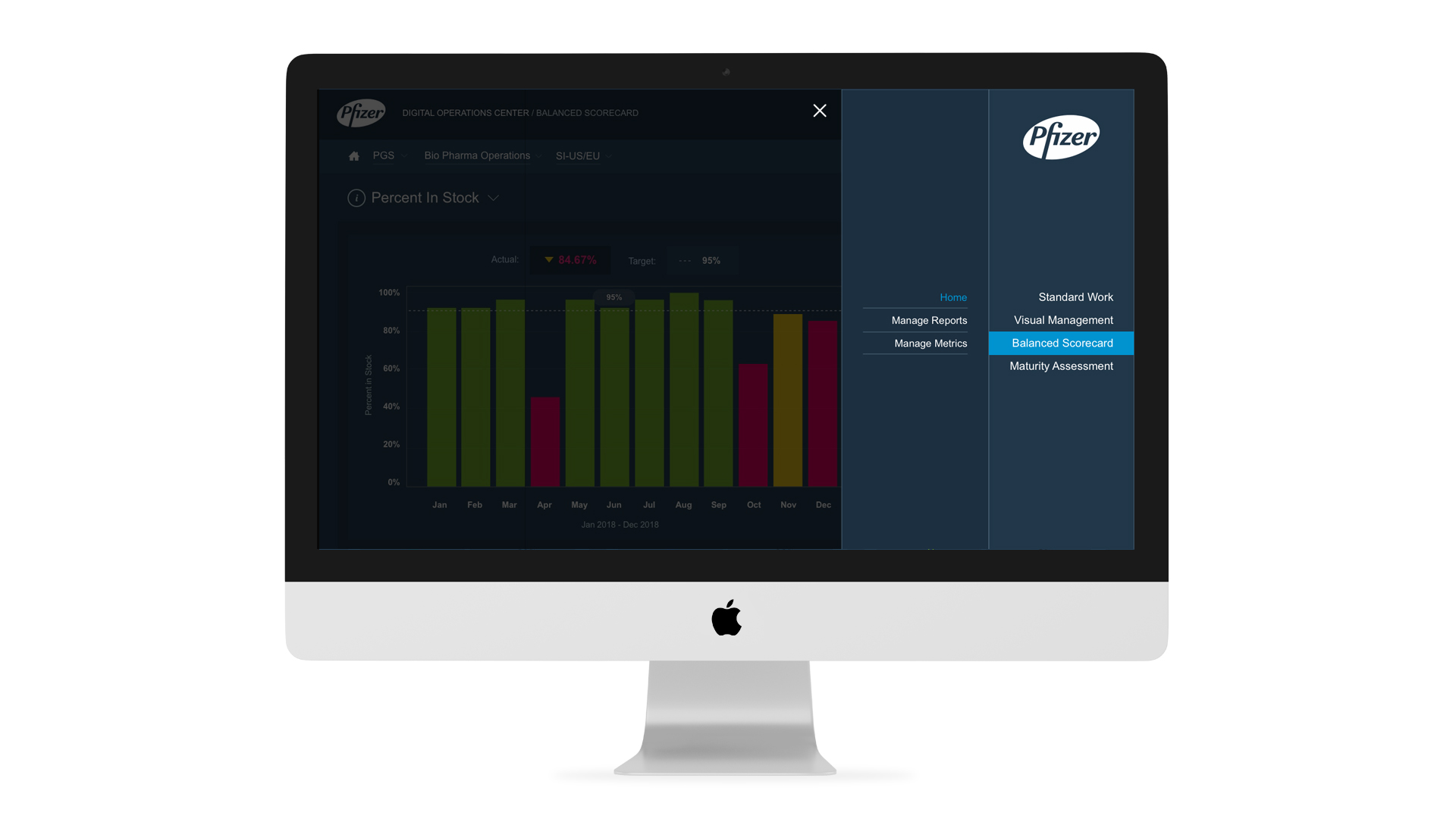
Design System

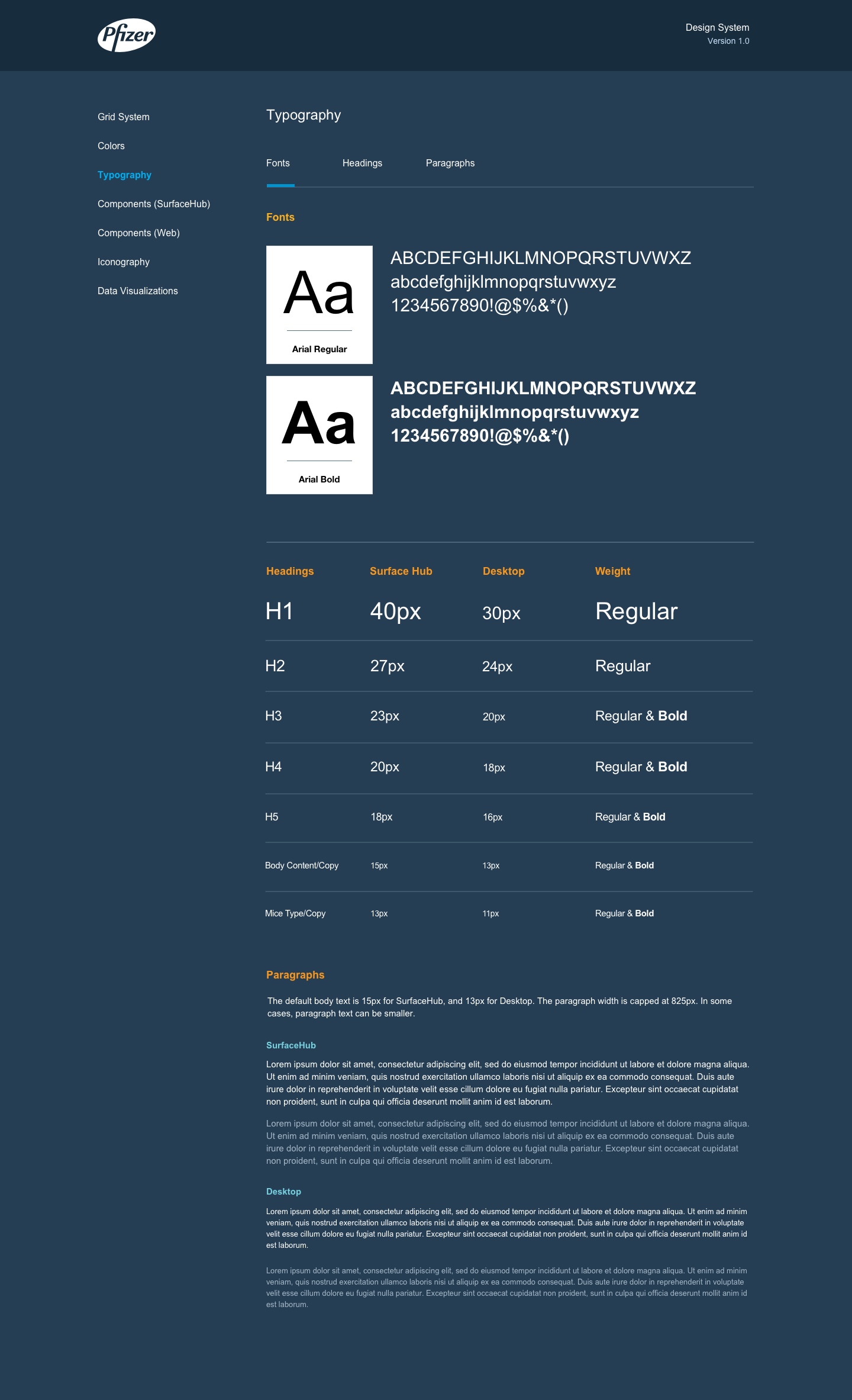
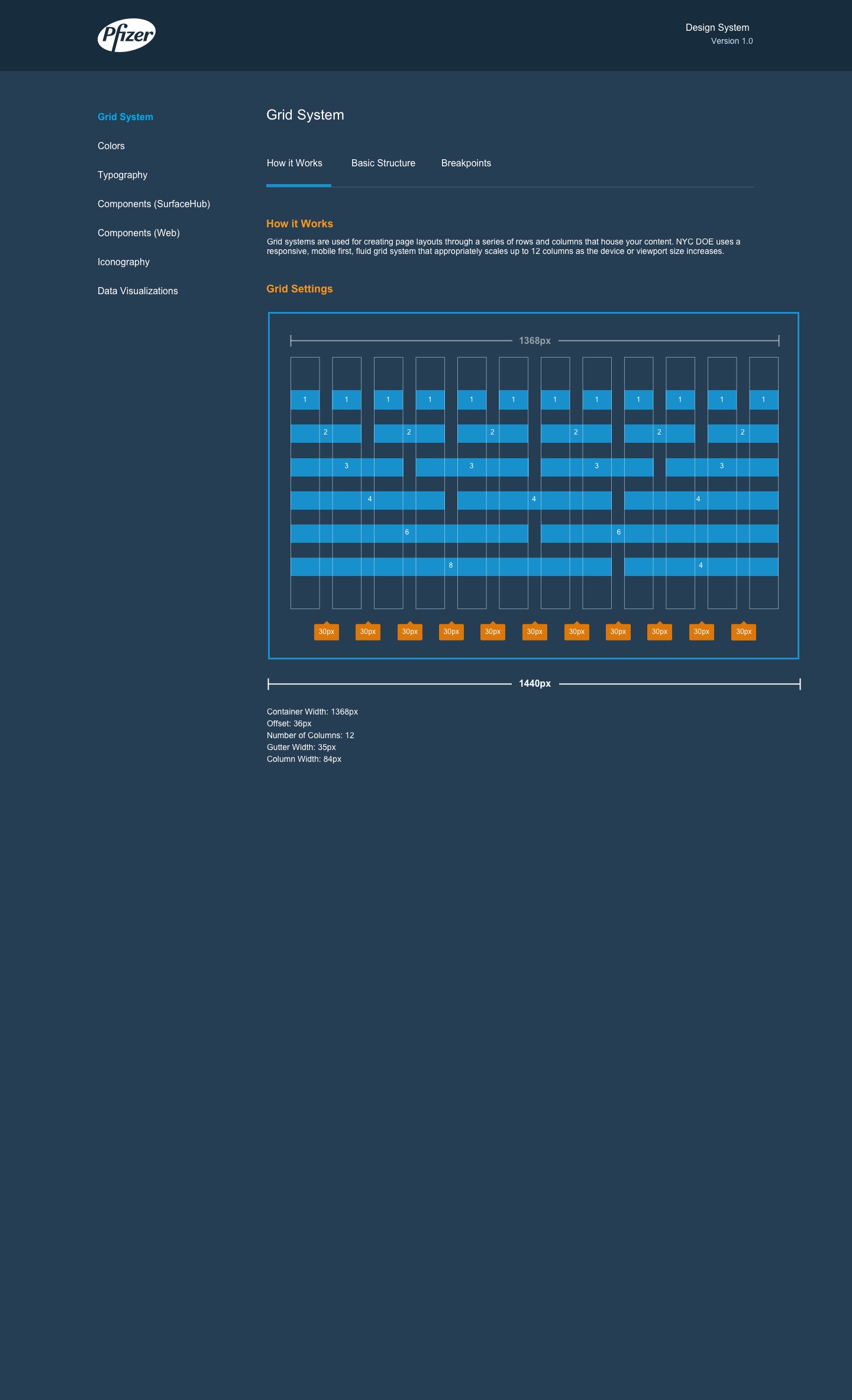
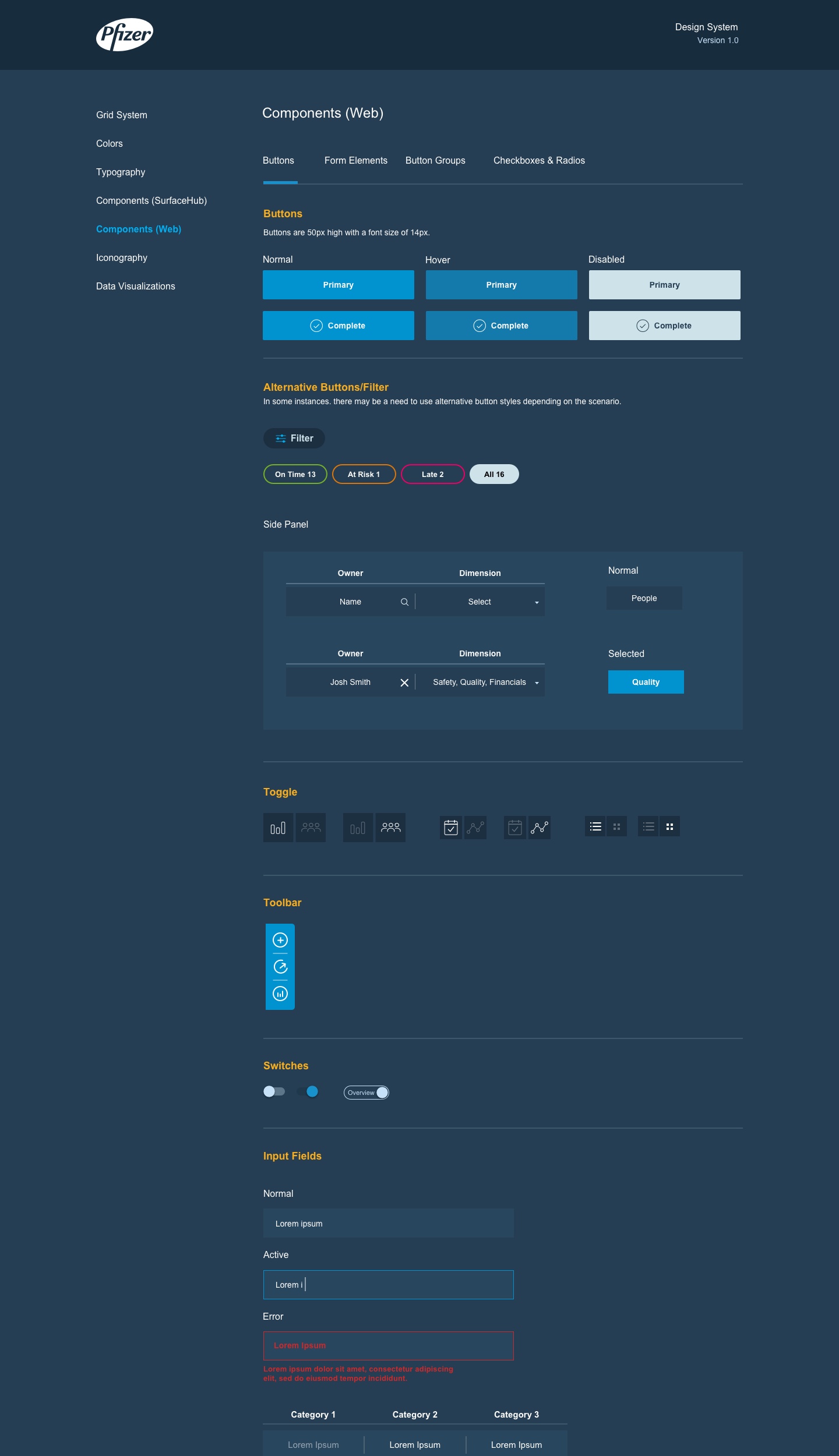
![]()
POST-LAUNCH REACTION
The Pfizer Digital Transformation project was a massive success for the both Pfizer and Avanade. Pfizer was able to completely transform the logistics of their business, manufacturing processes and logistics through the use of digital. Manufacturing plants all over the globe were able to adopt this new means of working into their day-to-day. The first plants to adopt the new suite of applications were in Europe, specifically Ireland and Belgium, but would later get rolled out to the entire world.
The suite of Microsoft Surface applications and responsive websites that were designed and developed continue to roll out new features and bug fixes often. This project was a massive success because it enabled Pfizer to be more efficient, effective and gives them the tools necessary to track every facet of their business.

